
漢德百科全書 | 汉德百科全书
 Von den Römern gegründete Städte
Von den Römern gegründete Städte
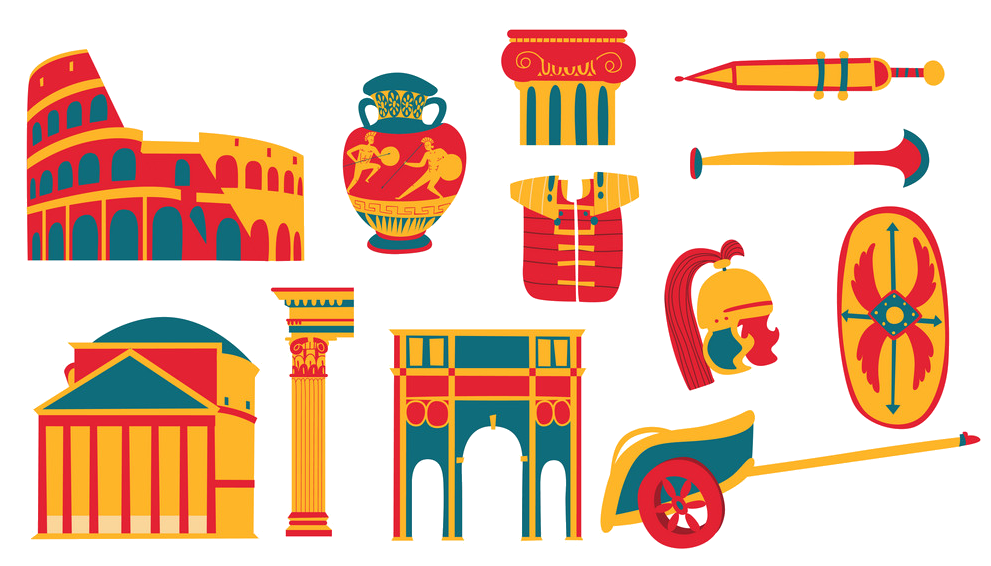

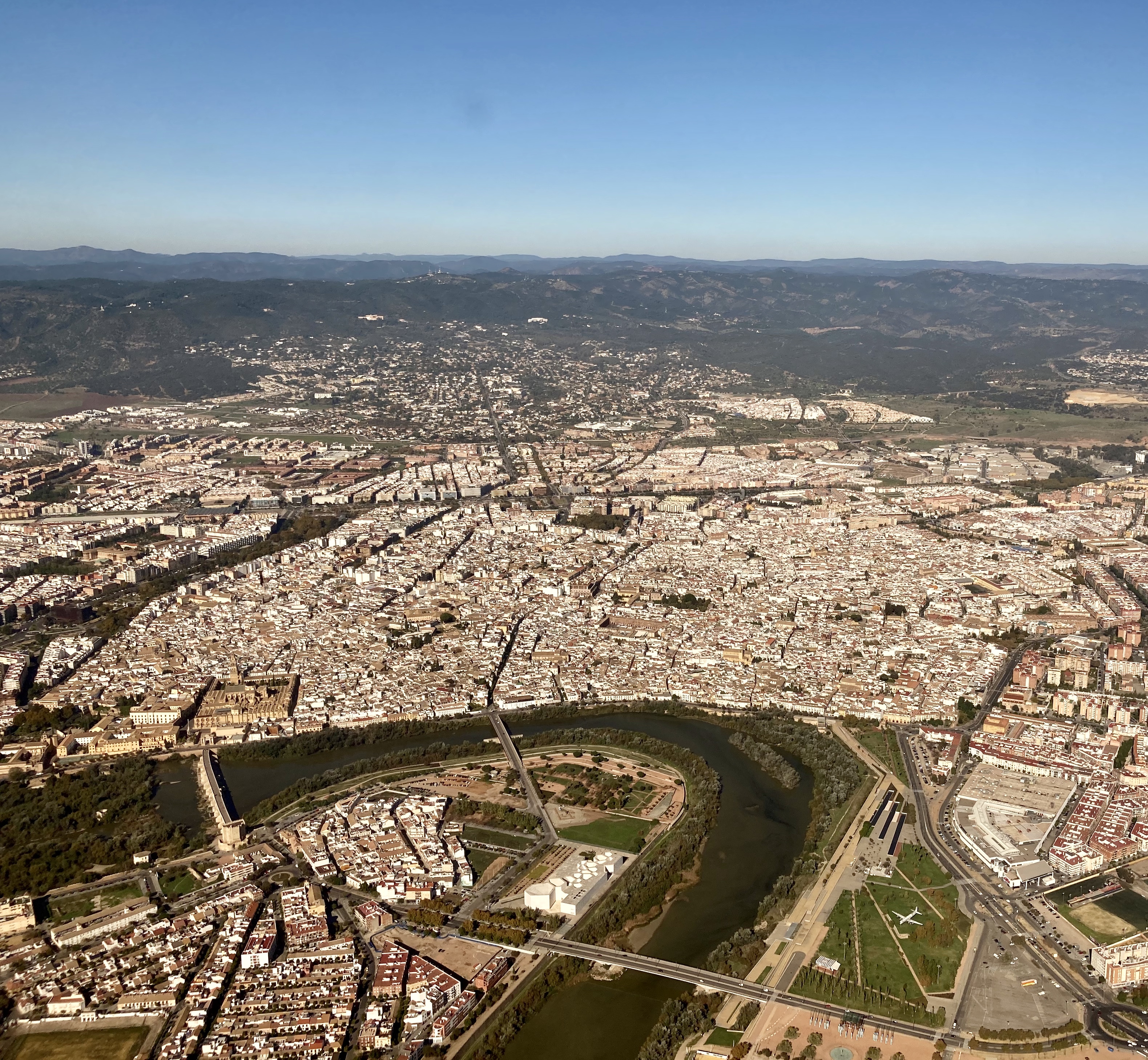
コルドバ(Córdoba)は、スペイン・アンダルシア州コルドバ県のムニシピオ(基礎自治体)。コルドバ県の県都である。グアダルキビール川に面する。
かつての後ウマイヤ朝の首都で、イスラム時代の文化を伝える建築物や街路が遺されている。メスキータやユダヤ人街を含む「コルドバ歴史地区」は世界遺産に登録されている。
Córdoba (/ˈkɔːrdəbə/; Spanish: [ˈkoɾðoβa]),[a] or Cordova (/ˈkɔːrdəvə/)[6][7] in English, is a city in Andalusia, southern Spain, and the capital of the province of Córdoba. It is the third most populated municipality in Andalusia, after Seville and Málaga, and the 11th overall in the country.
It was a Roman settlement on the right bank of the Guadalquivir, taken over by the Visigoths, followed by the Muslim conquests in the eighth century and later becoming the capital of the Umayyad Caliphate of Córdoba. During these Muslim periods, Córdoba was transformed into a world leading center of education and learning, producing figures such as Averroes, Ibn Hazm, and Al-Zahrawi,[8][9] and by the 10th century it had grown to be the second-largest city in Europe.[10][11] Following the Christian conquest in 1236, it became part of the Crown of Castile.
Córdoba is home to notable examples of Moorish architecture such as the Mezquita-Catedral, which was named as a UNESCO World Heritage Site in 1984 and is now a cathedral. The UNESCO status has since been expanded to encompass the whole historic centre of Córdoba, Medina-Azahara and Festival de los Patios. Cordoba has more World Heritage Sites than anywhere in the world, with four.[12] Much of this architecture, such as the Alcázar and the Roman bridge has been reworked or reconstructed by the city's successive inhabitants.
Cordoue (en espagnol : Córdoba, en arabe andalou Qurṭuba) est une ville située dans le sud de l'Espagne, en Andalousie. Cordoue est la capitale de la province homonyme. La ville est située sur les rives du fleuve Guadalquivir, non loin de la région montagneuse de la sierra Morena. Elle comptait 326 039 habitants en 2020, ce qui en fait l'une des villes les plus peuplées d'Andalousie avec Séville et Malaga.
La ville possède un riche patrimoine architectural et culturel, qui conserve des vestiges des différentes phases de son histoire. Dans l'Antiquité, la ville est la capitale de la province romaine d'Hispanie ultérieure pendant la période républicaine, puis de la province de Bétique durant l'Empire romain. Au Moyen Âge, après la conquête du sud de la péninsule ibérique par les Arabes et les Berbères au VIIIe siècle, Cordoue connaît une période d'expansion et de rayonnement particulier au Xe siècle en tant que capitale du Califat de Cordoue gouverné par une branche locale de la dynastie des Omeyyades. Elle redevient une ville de taille moyenne après la conquête de la région par les rois catholiques de Castille et d'Aragon au XIIIe siècle. Le Centre historique de Cordoue est classé depuis 1994 au patrimoine mondial de l'UNESCO, de même que la mosquée-cathédrale, Medina-Azahara ainsi que la fête des patios de Cordoue. Ce qui fait de Cordoue la ville du monde la plus classée au patrimoine mondial de l’Unesco1. Cordoue compte des monuments tels que le pont romain, la mosquée-cathédrale (Mezquita), le quartier juif médiéval (Judería) et l'Alcázar des rois chrétiens. Cordoue, ville des trois cultures2, est très célèbre pour ses penseurs. Les trois principaux philosophes nés à Cordoue sont Sénèque, Averroès et Maïmonide, philosophes majeurs de la civilisation romaine, islamique et juive.
Cordova (AFI: /ˈkɔrdova/[2]; in spagnolo Córdoba; in latino Cordŭba) è un comune spagnolo di 326 609 abitanti situato nella comunità autonoma dell'Andalusia, sulla riva del Guadalquivir e ai piedi della Sierra Morena. Fu la capitale della al-Andalus. Durante l'epoca d'oro islamica, Cordova fu trasformata in un centro mondiale di istruzione e apprendimento,[3][4] dando i natali a importanti filosofi e scienziati come Averroè, Ibn Hazm e Abu al-Qasim al-Zahrawi, e divenne la città più grande d'Europa, superando Costantinopoli.[5] Fu conquistata dal Regno di Castiglia tramite la Reconquista cristiana nel 1236.
Córdoba es una ciudad y municipio español en Andalucía, capital de la provincia homónima, situada en una depresión a orillas del Guadalquivir y al pie de Sierra Morena. Alberga una población de 326 039 habitantes en 2020, siendo la tercera ciudad más grande y poblada de Andalucía tras Sevilla y Málaga, y la duodécima de España. Su área metropolitana comprende ocho municipios, con una población de 360 298 habitantes en 2020, la vigésima tercera más poblada de España.5
Fundada por los romanos durante el siglo II a. C., llegaría a ser capital de la Hispania Ulterior en tiempos de la República romana, además de la provincia Bética durante el Imperio romano. No obstante, su momento álgido trascurrirá durante la dominación musulmana de la península ibérica, cuando se alzará como capital del Emirato de Córdoba, mientras que durante el Califato de Córdoba se convirtió en la ciudad más habitada, culta y opulenta de Europa y un centro líder mundial de la educación.678 Durante la larga Edad Media europea, en Córdoba florecieron las letras y las ciencias, gestándose las bases del Renacimiento europeo. Abundaron las mezquitas, las bibliotecas, los baños y los zocos, además de contar con multitud de fuentes, iluminación pública y alcantarillado durante la época de mayor esplendor califal.
Córdoba es actualmente la ciudad que más títulos Patrimonio de la Humanidad de la Unesco alberga del mundo.9 En 1984, la Mezquita-catedral de Córdoba fue incluida en la reputada lista; en 1994 lo haría el casco histórico que la rodea.10 La Fiesta de los Patios Cordobeses fue designada Patrimonio cultural inmaterial de la Humanidad en diciembre del 2012,11 y en julio de 2018 la ciudad palatina de Medina Azahara, en las afueras del núcleo urbano, fue declarada también Patrimonio de la Humanidad. Tiene uno de los cascos históricos más grandes de Europa, con 246,73 hectáreas con monumentos datados desde época romana.
Ко́рдова[5][6][7][3] (Кордо́ва[3]; исп. Córdoba [ˈkorðoβa]) — старинный город в Андалусии, столица провинции Кордова. Расположен на склоне отрога Сьерры-Морены на правом берегу Гвадалквивира в плодородной и очень жаркой местности. Кордова основана во времена господства Рима.
Сегодня Кордова — современный город средних размеров с населением 321 тыс. человек. В Старом городе сохранилось много исторических памятников эпохи расцвета столицы Кордовского халифата, занимавшего почти весь Иберийский полуостров.
 Deutschland
Deutschland
 FIFA Fussball-Weltmeisterschaft 2006
FIFA Fussball-Weltmeisterschaft 2006

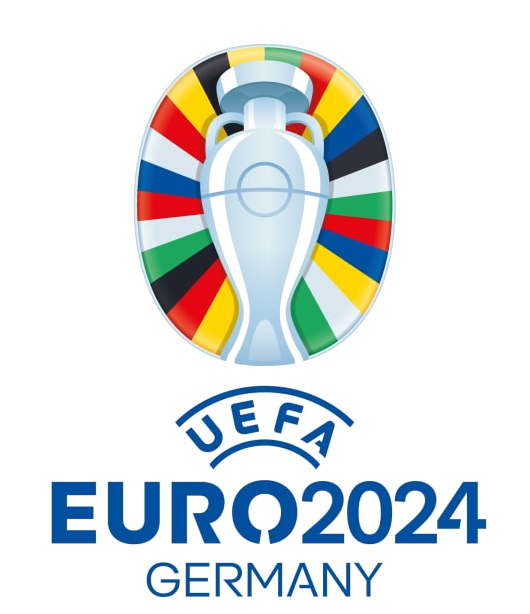 Fußball-Europameisterschaft 2024
Fußball-Europameisterschaft 2024

 Geschichte
Geschichte

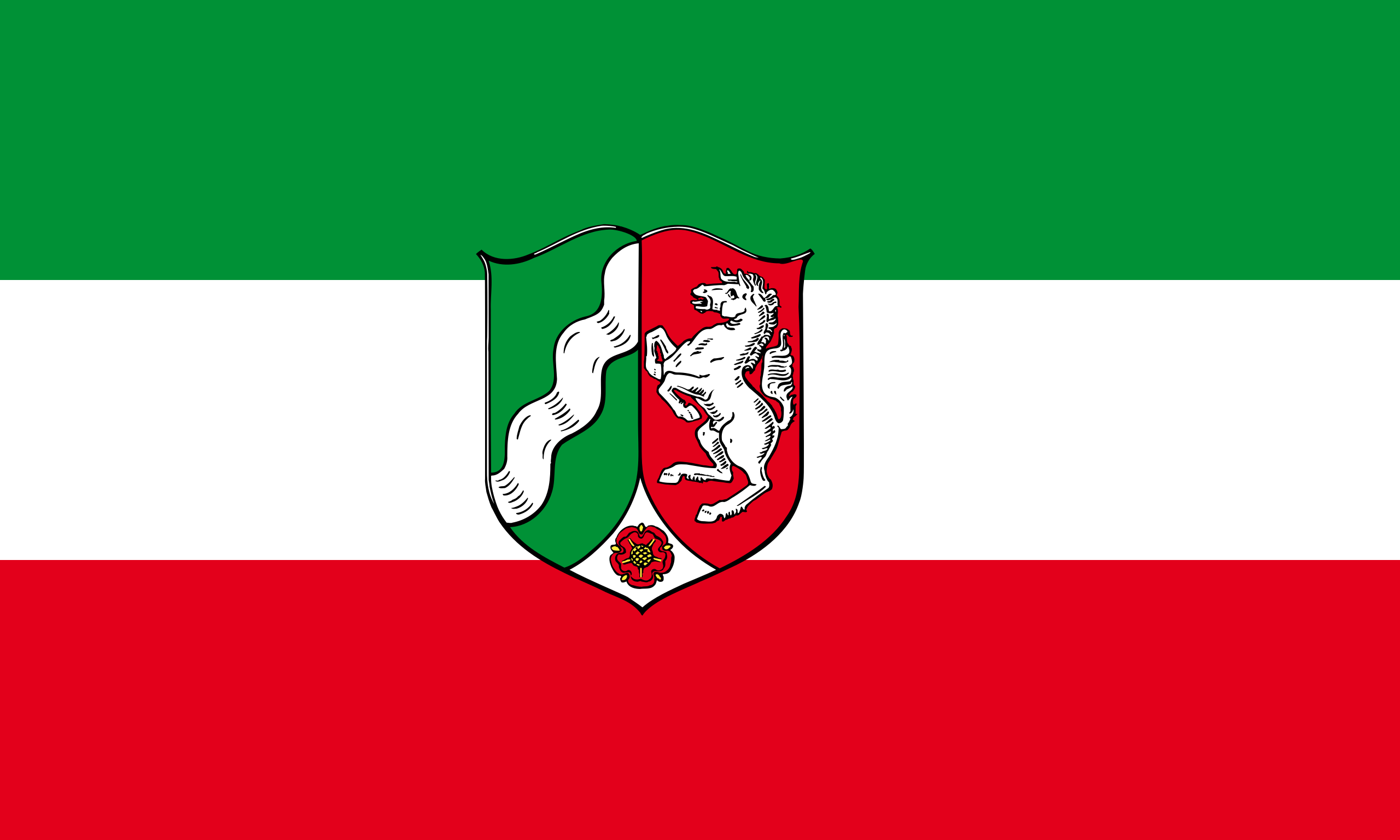 Nordrhein-Westfalen
Nordrhein-Westfalen
 Seidenstraße
Seidenstraße

 Von den Römern gegründete Städte
Von den Römern gegründete Städte

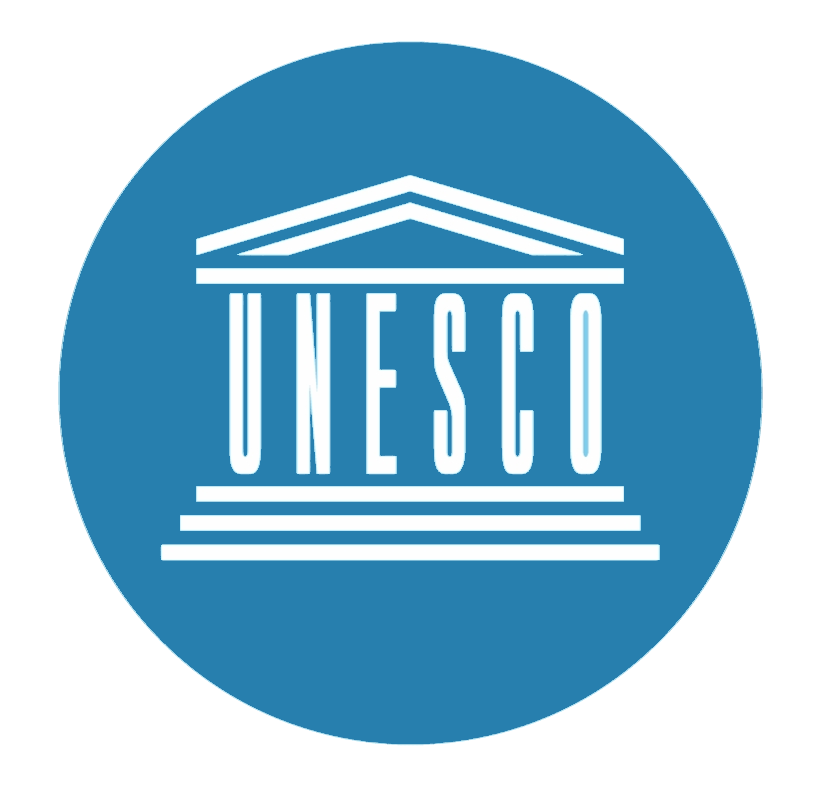 Weltkulturerbe
Weltkulturerbe
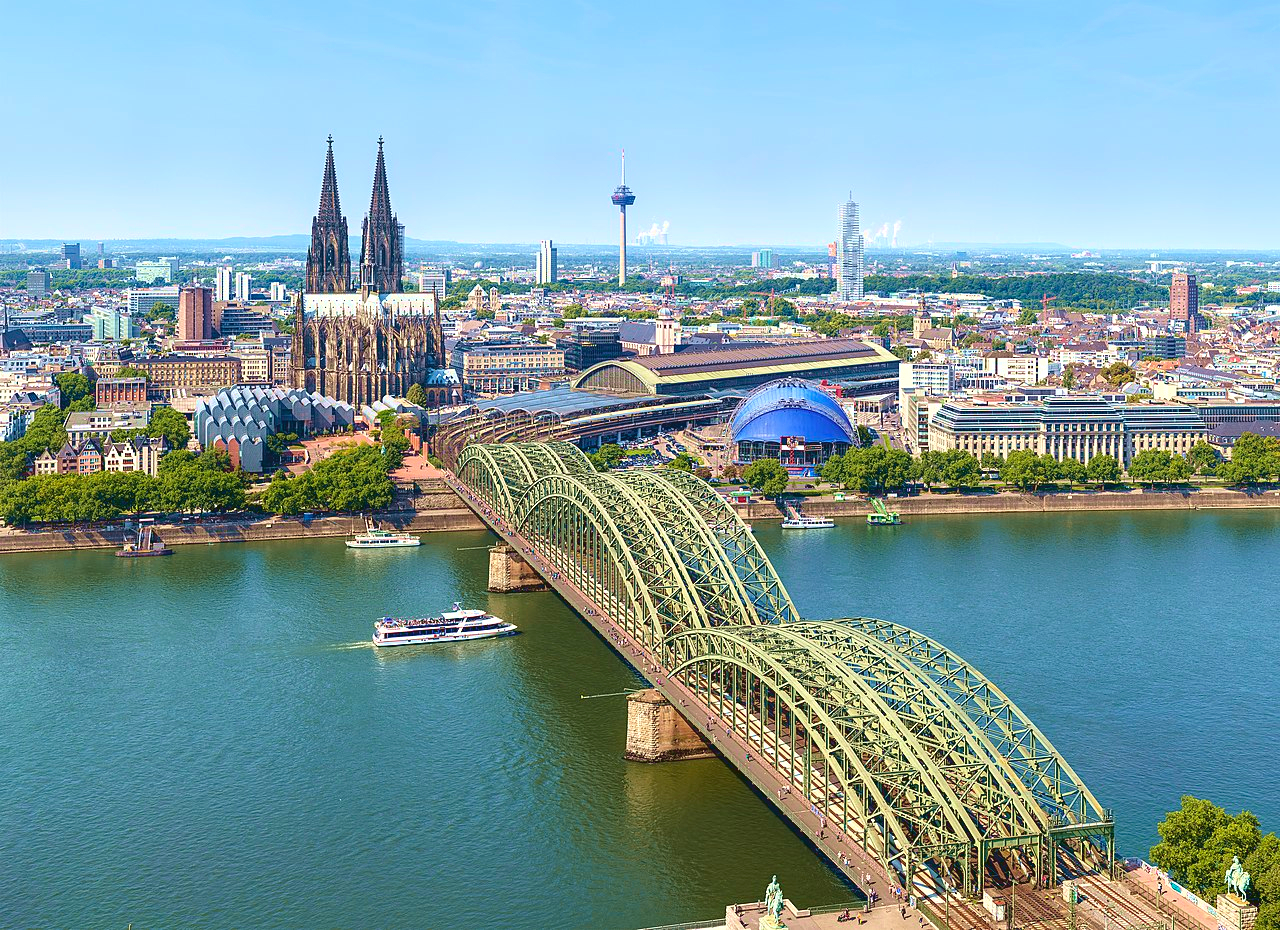
Köln (kölsch Kölle) ist mit mehr als einer Million Einwohnern die bevölkerungsreichste Stadt des Landes Nordrhein-Westfalen sowie nach Berlin, Hamburg und München die viertgrößte Stadt Deutschlands. Die kreisfreie Stadt gehört zum Regierungsbezirk Köln und ist das Zentrum des Ballungsraumes zwischen Kölner Bucht und Oberbergischem Land (siehe auch Region Köln/Bonn) mit gut vier Millionen Einwohnern. Sie ist zugleich das rheinische Bevölkerungszentrum der Metropolregion Rhein-Ruhr mit etwa zehn Millionen Einwohnern. Die heutige Metropole am Rhein wurde in römischer Zeit unter dem Namen Oppidum Ubiorum gegründet und im Jahr 50 n. Chr. als Colonia Claudia Ara Agrippinensium (kurz Colonia oder CCAA) zur Stadt erhoben.
Köln besitzt als Wirtschafts- und Kulturmetropole internationale Bedeutung. Sie zählt zu den wichtigsten Standorten der Chemie- und Automobilindustrie weltweit und beherbergt, teilweise zusammen mit einigen ihrer Vororte, Firmensitze und Produktionsstätten von zwölf internationalen Automobilmarken wie Ford und Toyota sowie zahlreicher Chemiekonzerne wie Lanxess. Die Karnevalshochburg ist außerdem Sitz vieler öffentlicher Verbände und professioneller Sportvereine. Zahlreiche Fernsehsender, Filmstudios, Musikproduzenten, Verlagshäuser und andere Medienunternehmen wie RTL und der WDR haben hier ihren Standort. Köln gilt ferner als eines der führenden Zentren des weltweiten Kunsthandels. Darüber hinaus zählt die Stadt vor allem aufgrund des bedeutenden Kölner Doms und ihrer romanischen Kirchen sowie weiterer mittelalterlicher Baudenkmäler, einer über 2000-jährigen Stadtgeschichte, bedeutsamer Veranstaltungen sowie ihrem kulturellen und kulinarischen Erbe zu den wichtigsten Reisezielen innerhalb Europas. Ebenfalls ist Köln bedeutender Kongress- und Messestandort: die Fototechnikmesse Photokina, die Fitness- und Gesundheitsmesse FIBO, die Süßwarenmesse und die Videospielmesse Gamescom gelten als Weltleitmessen, die Art Cologne als älteste Kunstmesse der Welt.[4] Dank der Universität zu Köln (etwa 50.000 Studierende), der Technischen Hochschule Köln (etwa 25.000 Studierende) und zahlreicher weiterer Hochschulen stellt sie obendrein den größten Bildungs- und Forschungsstandort im Westen Deutschlands dar.
Köln ist Sitz der größten römisch-katholischen Diözese Deutschlands[5] und war bis 1803 Sitz eines Kurfürstentums.
Die günstige Lage am Rhein mit der Querung bedeutender West-Ost-Handelsstraßen und dem Sitz weltlicher sowie insbesondere kirchlicher Macht trug im Heiligen Römischen Reich zur überregionalen Geltung Kölns bei. Als Hansestadt wurde sie durch Freihandel zu einem wichtigen Handelsstandort. Ihre Bedeutung als Verkehrsknotenpunkt zeigen heute der umfangreiche Schienenpersonenfernverkehr sowie der Bahnhof Eifeltor, der zu den größten Containerumschlagbahnhöfen Europas gehört. Ergänzt wird die Infrastruktur durch vier Binnenhäfen und den Flughafen Köln/Bonn.
科隆的历史可以追溯到公元前1世纪。那时罗马帝国正称雄欧洲,皇帝奥古斯都派驸马阿格里帕挥师北进,抵达莱茵河边,与河东为数众多的日耳曼部落隔 河对峙。阿格里凰招募盟友乌比尔部落到河西来建起军营要塞,共同防守新开拓的边地。这是公元前38年的事。又过了几十年,营寨四周渐成街市。这时,阿格里 帕的外孙女,出生于此地的阿格里皮娜登上了皇后宝座。她恳请皇帝把自己的故乡升格设市。公元50年,后幸福克劳锹一世下诏,授予此地罗马城市的权力,并定 为名为科隆尼亚·克劳狄·阿拉·阿格里皮内西姆。这市名虽长,却道出了城市的历史渊源。科隆尼亚意为罗马人的拓居地,克劳狄是皇帝名,阿拉是乌比尔冲淡落 的祭坛,阿格里皮内西姆则是皇后名加词尾变化而来。天长日久,这冗长的市名遂简化为科隆。罗马时代是科隆历史上的第一个兴盛时期,这里商贾云集,街市繁 盛,城垣高磊,至今犹存的罗马塔(Romerturm),就是那时城垣的一部分。
科隆(德语:Köln,[kœln]  listen 帮助·信息;1919年前德语也拼写为Cöln),是德国第四大城市,是北威州最大的城市,亦是德国内陆最重要的港口之一,莱茵地区的经济文化和历史中心。它已有2000多年的历史,是德国最古老的城市之一。中世纪科隆已经成为一个重要的教会中心和艺术知识中心。科隆在二战期间遭到严重破坏。今天它以其文化和建筑遗产以及许多重要的国际性活动而闻名。
listen 帮助·信息;1919年前德语也拼写为Cöln),是德国第四大城市,是北威州最大的城市,亦是德国内陆最重要的港口之一,莱茵地区的经济文化和历史中心。它已有2000多年的历史,是德国最古老的城市之一。中世纪科隆已经成为一个重要的教会中心和艺术知识中心。科隆在二战期间遭到严重破坏。今天它以其文化和建筑遗产以及许多重要的国际性活动而闻名。
1850年科隆的人口超过十万,在德国算作大城市。加上其第二住址在科隆的人其居民数今天超过一百万。
科隆也有天主教大主教,是天主教科隆大主教座堂所在地。哥特式教堂科隆大教堂1996年被指定为世界文化遗产;它是科隆的主要标志,非官方象征。
43%居民信奉罗马天主教,18%信奉新教,39%信奉其他宗教。直到二战从东德涌来的大量难民,罗马天主教徒一直占科隆居民的大多数。2005年,科隆见证最大的天主教青年盛会。第二十届世界青年日从8月15日星期一到8月21日星期日在科隆举办。
科隆位于欧洲一条重要的东西交通要道与莱茵河的交叉口上。莱茵河是欧洲南北交通的一条重要水道。科隆今天是德国铁路交通最繁忙的枢纽。它的内河港口是欧洲最重要的内河港口之一。
它还是一个文化中心,尤其是创造艺术的一个中心。它的狂欢节非常有名,此外它还是许多协会的驻地。在20世纪的后半叶科隆从一个以重工业为主的城市演变为一个以服务业为主的工业。今天科隆是一个媒体中心,市内还建造了许多新的办公楼。科隆的保险业也有跨地区性的意义。
科隆还以当地的“科隆啤酒”(Kölsch)闻名,Kölsch也是科隆方言,一句笑话说Kölsch是世界上唯一能喝的语言。科隆也是科隆香水或古龙水的发源地。
科隆是德国最大的大学城之一,市内共有85,183名入册的大学生,占市民总数的8.5%。科隆的外国人数量也很高,2004年底市内有175,515名外国籍居民,占市民总数的17.2%,尤其土耳其人社群是德国最大的之一。科隆因此有很长的多文化熔炉的传统。科隆人素来以开放、自由和宽容著称。
ケルン(ドイツ語: Köln [kœln] (![]() 音声ファイル)、ケルン語: Kölle [ˈkœɫə] (
音声ファイル)、ケルン語: Kölle [ˈkœɫə] (![]() 音声ファイル)、英語: Cologne [kəˈloʊn])はドイツではベルリン、ハンブルク、ミュンヘンに次いで4番目に大きな都市である。ノルトライン=ヴェストファーレン州とヨーロッパでは1,000万人以上が住む大都市圏の一つであるライン=ルール大都市圏地域(英語版)内では最大の都市である。ケルン市街地はライン川の両岸にまたがる。市内にはケルン大聖堂 (Kölner Dom) があり、カトリック教会のケルン大司教の拠点がある。ケルン大学(Universität zu Köln) は欧州でも最古で最大の大学の1つである[2]。
音声ファイル)、英語: Cologne [kəˈloʊn])はドイツではベルリン、ハンブルク、ミュンヘンに次いで4番目に大きな都市である。ノルトライン=ヴェストファーレン州とヨーロッパでは1,000万人以上が住む大都市圏の一つであるライン=ルール大都市圏地域(英語版)内では最大の都市である。ケルン市街地はライン川の両岸にまたがる。市内にはケルン大聖堂 (Kölner Dom) があり、カトリック教会のケルン大司教の拠点がある。ケルン大学(Universität zu Köln) は欧州でも最古で最大の大学の1つである[2]。
ケルンは1世紀にローマのコロニアとしてウビイ(英語版)の領域に創建された[3]。ゲルマニア・インフェリオルの州都として462年にフランク王国によって占領されるまで、地域の軍の司令部が置かれていた。中世、東西ヨーロッパを結ぶ重要な交易路の一つとして繁栄した。ケルンはハンザ同盟の主要なメンバーの一員で、中世やルネサンス期にはアルプス以北では最大の都市であった。
第二次世界大戦まで、ケルンは他にもフランスやまたイギリスの支配を幾度か経験している。第二次世界大戦中、ドイツの都市の中でも最も多くの空襲を受けた都市の一つでイギリス空軍(RAF)によって34,711トンの爆弾が都市に落とされた[4]。この空襲の影響でケルンの人口は主に住民の避難によって95%減少し、市街のほとんどが破壊された。出来るだけ多くの歴史的建築物を復元することを意図して、再建の結果として非常に混じり合った独特の都市景観を呈している。
ケルンはラインラントの主要な文化の中心で、30以上の博物館と100以上の美術館を擁している。古代ローマの遺跡から、現代の絵画や彫刻など展示も幅広い。ケルンメッセ(英語版)ではアートケルン(英語版)やimmケルン(英語版)、ゲームズコム、フォトキナなど多くの見本市が開催されている。
Cologne (English: /kəˈloʊn/; German: Köln, pronounced [kœln] ( listen), Ripuarian: Kölle [ˈkœlə] (
listen), Ripuarian: Kölle [ˈkœlə] ( listen)) is the largest city of Germany's most populous federal state of North Rhine-Westphalia, and its 1,075,935 (2016) inhabitants make it the fourth most populous city in Germany after Berlin, Hamburg, and Munich. The largest city on the Rhine, it is also the most populous city both of the Rhine-Ruhr Metropolitan Region, which is Germany's largest and one of Europe's major metropolitan areas, and of the Rhineland. Centred on the left bank of the Rhine, Cologne is about 45 kilometres (28 mi) southeast of North Rhine-Westphalia's capital of Düsseldorf and 25 kilometres (16 mi) northwest of Bonn. It is the largest city in the Central Franconian and Ripuarian dialect areas.
listen)) is the largest city of Germany's most populous federal state of North Rhine-Westphalia, and its 1,075,935 (2016) inhabitants make it the fourth most populous city in Germany after Berlin, Hamburg, and Munich. The largest city on the Rhine, it is also the most populous city both of the Rhine-Ruhr Metropolitan Region, which is Germany's largest and one of Europe's major metropolitan areas, and of the Rhineland. Centred on the left bank of the Rhine, Cologne is about 45 kilometres (28 mi) southeast of North Rhine-Westphalia's capital of Düsseldorf and 25 kilometres (16 mi) northwest of Bonn. It is the largest city in the Central Franconian and Ripuarian dialect areas.
The city's famous Cologne Cathedral (Kölner Dom) is the seat of the Catholic Archbishop of Cologne. There are many institutions of higher education in the city, most notably the University of Cologne (Universität zu Köln), one of Europe's oldest and largest universities[2], the Technical University of Cologne (Technische Hochschule Köln), Germany's largest university of applied sciences, and the German Sport University Cologne (Deutsche Sporthochschule Köln), Germany's only sport university. Cologne Bonn Airport (Flughafen Köln/Bonn) is Germany's seventh-largest airport and lies in the southeast of the city. The main airport for the Rhine-Ruhr region is Düsseldorf Airport.
Cologne was founded and established in Ubii territory in the 1st century AD as the Roman Colonia Claudia Ara Agrippinensium, the first word of which is the origin of its name.[3] An alternative Latin name of the settlement is Augusta Ubiorum, after the Ubii.[4] "Cologne", the French version of the city's name, has become standard in English as well. The city functioned as the capital of the Roman province of Germania Inferior and as the headquarters of the Roman military in the region until occupied by the Franks in 462. During the Middle Ages it flourished on one of the most important major trade routes between east and west in Europe. Cologne was one of the leading members of the Hanseatic League and one of the largest cities north of the Alps in medieval and Renaissance times. Prior to World War II the city had undergone several occupations by the French and also by the British (1918–1926). Cologne was one of the most heavily-bombed cities in Germany during World War II, with the Royal Air Force (RAF) dropping 34,711 long tons (35,268 tonnes) of bombs on the city.[5] The bombing reduced the population by 95%, mainly due to evacuation, and destroyed almost the entire city. With the intention of restoring as many historic buildings as possible, the successful postwar rebuilding has resulted in a very mixed and unique cityscape.
Cologne is a major cultural centre for the Rhineland; it hosts more than 30 museums and hundreds of galleries. Exhibitions range from local ancient Roman archeological sites to contemporary graphics and sculpture. The Cologne Trade Fair hosts a number of trade shows such as Art Cologne, imm Cologne, Gamescom, and the Photokina.
Cologne (Köln en allemand, Kölle en kölsch) est une ville de l'Ouest de l'Allemagne, en Rhénanie-du-Nord–Westphalie. Avec environ un million d'habitants début 2014, Cologne est la plus grande ville du Land, devant Düsseldorf et Dortmund, et la quatrième ville d'Allemagne par sa population, derrière Berlin, Hambourg et Munich. Traversée par le Rhin, son agglomération de plus de deux millions d'habitants constitue le sud de l'aire métropolitaine Rhin-Ruhr, au cœur de la mégalopole européenne. La ville est notamment célèbre pour sa cathédrale, classée au patrimoine mondial de l'Unesco, ainsi que pour l'eau de Cologne.
Fondée par les Romains, qui en firent la capitale de la province de Germanie inférieure, Cologne est la plus ancienne des grandes villes allemandes, ce dont témoigne un important patrimoine antique. Sa situation géographique favorable dans la vallée du Rhin en fait depuis le Moyen Âge un carrefour important en Europe. De tradition catholique, Cologne devient dès le XIVe siècle un important centre culturel grâce à son université - aujourd'hui parmi les plus anciennes au monde. Archevêché, membre de la Ligue hanséatique, elle acquiert le statut de Ville libre d'Empire en 1475. Annexée par la France de 1801 à 1815, puis sous domination prussienne, Cologne est occupée après la Première Guerre mondiale et est victime de 262 bombardements alliés entre 1940 et 1945. Après avoir perdu 95 % de sa population, la ville est reconstruite et de nombreux bâtiments sont restaurés à l'identique.
À l'image de l'Allemagne de l'Ouest, la ville connaît un « miracle économique » (Wirtschaftswunder) et voit sa population s'accroître. Cologne accueille aujourd'hui de nombreux sièges sociaux d'entreprises, ainsi que des évènements d'ampleur internationale dans la Koelnmesse, comme les salons Gamescom et Photokina. Ville touristique, elle dispose d'un important patrimoine religieux (l'église Saint-Martin, les douze basiliques romanes) et de musées (le musée Ludwig, le Musée romain-germanique). Le pont Hohenzollern est en outre le pont ferroviaire le plus fréquenté d'Allemagne. Enfin, l'urbanisme de Cologne est en pleine mutation et comporte deux nouveaux quartiers issus d'une opération de rénovation urbaine et destinés à accueillir des entreprises dans les nouvelles technologies : MediaPark et Rheinauhafen – ce dernier étant en cours d'aménagement.
Colonia (AFI: /koˈlɔnja/[2]; in tedesco Köln ascolta[?·info], in dialetto locale Kölle, in francese e inglese Cologne) è una città extracircondariale di 1 075 935 abitanti, con l'agglomerato urbano 1 800 000 abitanti) della Germania, la quarta per numero di abitanti e la più grande del Land della Renania Settentrionale-Westfalia. È considerata la capitale economica, culturale e storica della Renania, quasi completamente ricostruita dopo i bombardamenti della seconda guerra mondiale.
Colonia (en alemán: Köln  [kœln] (?·i); en kölsch: Kölle
[kœln] (?·i); en kölsch: Kölle  [ˈkœɫə] (?·i)) es la cuarta ciudad más grande de Alemania, precedida por Berlín, Hamburgo y Múnich, y la más poblada dentro del Estado federado de Renania del Norte-Westfalia, aunque Düsseldorf es la capital del Estado. Fundada en el año 38 a. C. como Oppidum Ubiorum («Ciudad de los Ubios»), fue posteriormente declarada colonia romana con el nombre de Colonia Claudia Ara Agrippinensium en alusión a la emperatriz Agripina, esposa del emperador Claudio y madre de Nerón.
[ˈkœɫə] (?·i)) es la cuarta ciudad más grande de Alemania, precedida por Berlín, Hamburgo y Múnich, y la más poblada dentro del Estado federado de Renania del Norte-Westfalia, aunque Düsseldorf es la capital del Estado. Fundada en el año 38 a. C. como Oppidum Ubiorum («Ciudad de los Ubios»), fue posteriormente declarada colonia romana con el nombre de Colonia Claudia Ara Agrippinensium en alusión a la emperatriz Agripina, esposa del emperador Claudio y madre de Nerón.
Es un importante centro económico y cultural de importancia internacional y representa uno de los enclaves más importantes del mundo artístico. Es famoso por ser la sede del carnaval más espectacular del país. Además es la sede de muchas asociaciones, empresas mediáticas y numerosas cadenas de televisión, discográficas y editoriales. Su importancia reside en parte en su monumento más emblemático: la catedral, su historia de más de 2000 años, sus numerosos eventos internacionales, como su cultura y su gastronomía que lo hacen uno de los destinos más visitados de Europa. La Universidad de Colonia (alrededor de 50 000 estudiantes), la Escuela Técnica Superior de Colonia (alrededor de 25 000 estudiantes) y demás escuelas superiores representa la gran importancia educativa y de investigación dentro de la región del Rin-Ruhr.
La excelente ubicación en el río Rin, en mitad de las principales rutas comerciales entre este y oeste, como sede secular como Ciudad Libre Imperial tanto como su poder eclesiástico a través del arzobispado en el Sacro Imperio Romano le consiguió granjearse un gran prestigio e importancia en el país. Como ciudad hanseática ganó mucha importancia comercial a través del libre comercio con el resto de la Hansa. Su importancia como centro neurálgico de las comunicaciones siguen hoy día con la gran cantidad de viajeros en tren que salen cada día de la Estación Central (Hauptbahnhof), y la estación Köln Eifeltor, que es uno de los mayores patios de carga ferroviarios para el transporte de mercancías. La infraestructura ferrovial se complementa con cuatro puertos interiores para los trenes. El transporte aéreo también tiene su importancia en la ciudad debido al aeropuerto de Colonia/Bonn.
Кёльн (нем. Köln, рип. Kölle [ˈkœɫə], лат. Colonia) — город в Федеративной Республике Германия, в земле Северный Рейн-Вестфалия. Город-миллионник Кёльн является четвёртым по населению и третьим по площади городом Германии, а также одним из крупнейших экономических и культурных центров страны. Кроме того, Кёльн — крупнейший центр 10-миллионной надагломерации Рейнско-Рурского региона и центр 2-миллионной моноцентрической агломерации. «Метрополия на Рейне», как часто называют Кёльн, — это один из старейших городов Германии, который играл значительную роль в истории Европы на протяжении всего своего существования, начиная с Римской эпохи. Кёльн знаменит своим главным храмом — Кёльнским собором, одним из главных католических храмов Германии.


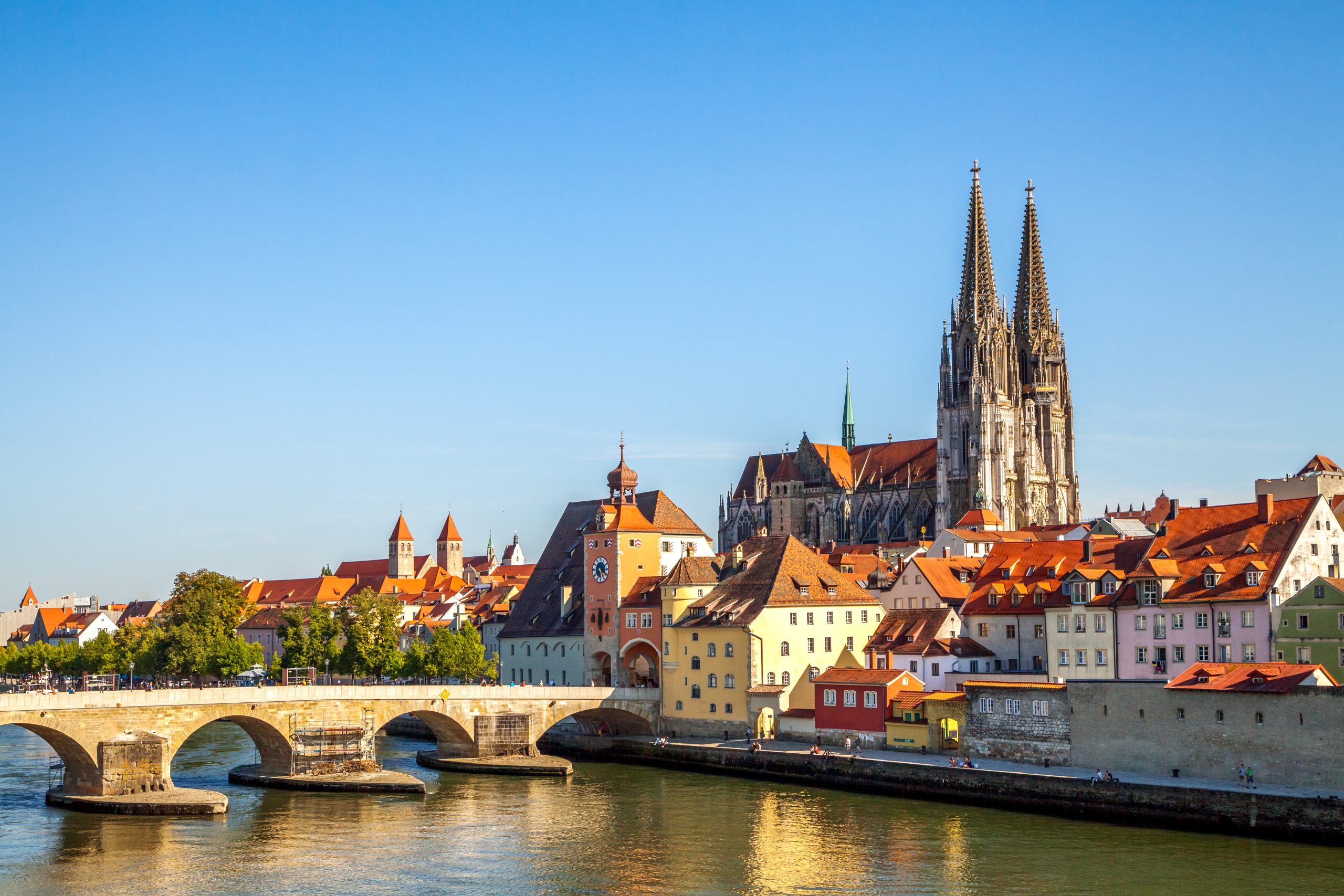
Regensburg (von lateinisch Castra Regina; auch lateinisch Ratisbona oder Ratispona) liegt in Ostbayern und ist die Hauptstadt des Regierungsbezirks Oberpfalz mit Sitz der Regierung der Oberpfalz. Die kreisfreie Stadt ist auch Sitz des Landrats des gleichnamigen Landkreises. Die Stadt ist eines der drei bayerischen Regionalzentren und hat 159.465 Einwohner (31. Dezember 2023). Damit steht die Stadt nach München, Nürnberg und Augsburg an vierter Stelle der Großstädte Bayerns. Die Stadt ist Bischofssitz der im Jahr 739 errichteten Diözese Regensburg.
Die Stadt Regensburg hat römische Wurzeln, nach ca. 175 wurde im östlichen Bereich des heutigen Stadtgebiets das Legionslager Castra Regina errichtet, geschützt von einer weit nach Westen ausgreifenden Schutzmauer mit drei Toren, mit Wasser versorgt vom Vitusbach. Im Mittelalter wurde Regensburg Reichsstadt. Nach dem Dreißigjährigen Krieg wurde die Stadt bis 1806 zum Sitz des Immerwährenden Reichstags des Heiligen Römischen Reichs gemacht.
Wirtschaftlich ist Regensburg stark geprägt vom verarbeitenden Gewerbe (Automobilbau, Maschinenbau, Elektrotechnik, Mikroelektronik). Mit 760 sozialversicherten Beschäftigten je 1000 Einwohner hat Regensburg eine hohe Arbeitsplatzdichte.[2] Die Arbeitslosigkeit liegt etwas unter dem bayerischen Landesdurchschnitt (Januar 2019: 2,9 %; Landesdurchschnitt Januar 2019: 3,3 %[3][4]). Seit 1962 ist Regensburg Sitz der Universität Regensburg als einer von heute drei Hochschulen in der Stadt.[5] 1978 begann der Bau des zugehörigen Universitätsklinikums. Als erster Bauabschnitt nahm 1984 die Zahnklinik den Betrieb auf, und 1992 begann im Klinikum der allgemeine stationäre Betrieb.
Seit dem 13. Juli 2006 gehört das Ensemble Altstadt von Regensburg mit Stadtamhof mit seinen historischen Baudenkmälern zum UNESCO-Welterbe.
雷根斯堡(德語:Regensburg,德语:[ˈʁeːɡn̩sbʊɐ̯k] (ⓘ),另譯累根斯堡),德国巴伐利亚州的非县辖城市,是上普法尔茨行政区和雷根斯堡县的首府,天主教雷根斯堡教区主教的驻地。雷根斯堡位于上巴伐利亚,多瑙河与雷根河的交汇处,向西北约88千米是纽伦堡,向南约104千米是慕尼黑,向西南约113千米是奥格斯堡,面积80.7平方公里,人口145,465(2015年12月31日),是继慕尼黑、纽伦堡、奥格斯堡后的巴伐利亚州第四大城市。雷根斯堡的支柱产业是加工工业,包括汽车制造、机械制造、电子和微电子等。

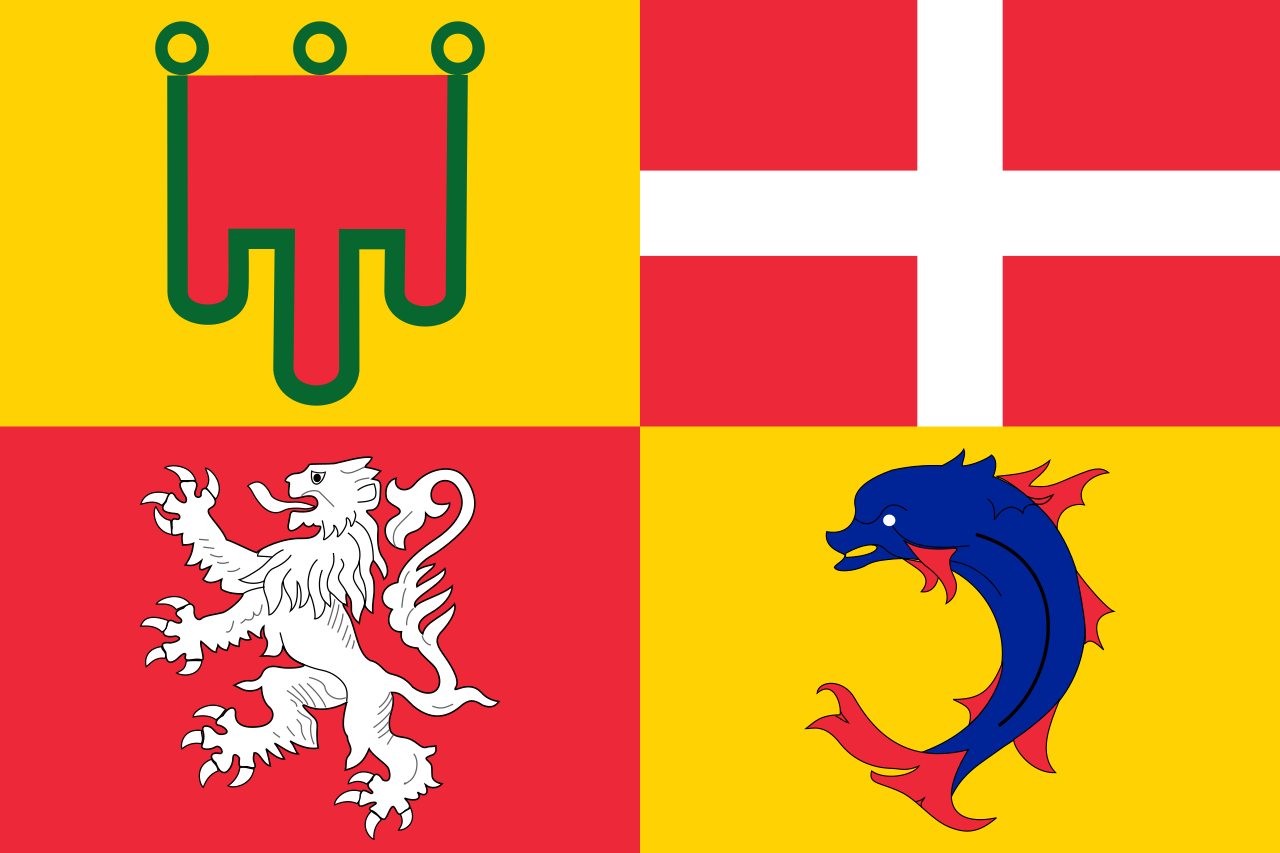 Auvergne-Rhône-Alpes
Auvergne-Rhône-Alpes
 FIFA Fussball-Weltmeisterschaft 1998
FIFA Fussball-Weltmeisterschaft 1998
 Frankreich
Frankreich
 Fußball-Europameisterschaft 2016
Fußball-Europameisterschaft 2016
 Fußball-Weltmeisterschaft der Frauen 2019
Fußball-Weltmeisterschaft der Frauen 2019

 Geschichte
Geschichte
 Seidenstraße
Seidenstraße

 Von den Römern gegründete Städte
Von den Römern gegründete Städte

 Weltkulturerbe
Weltkulturerbe
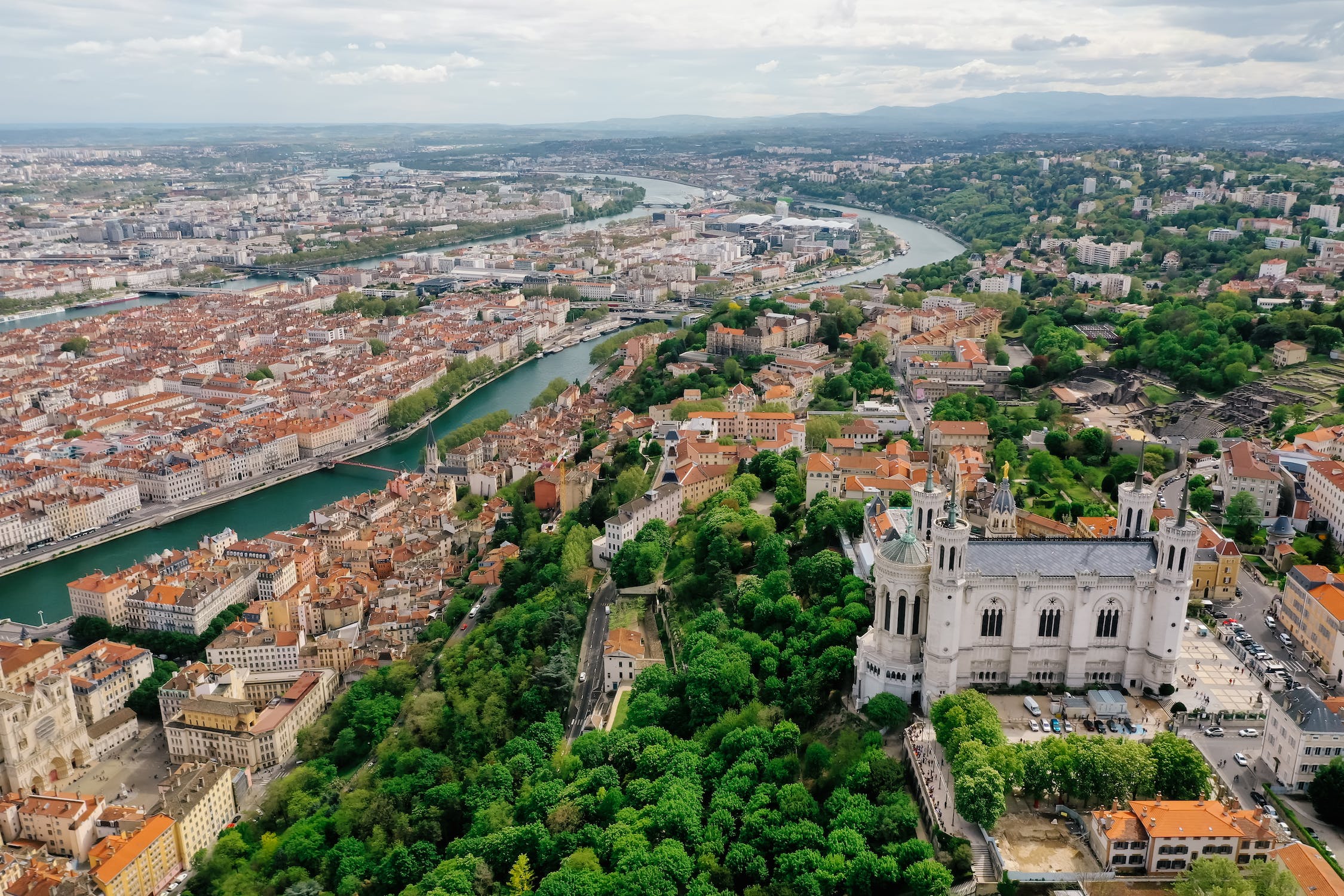
Die Stadt Lyon liegt im Osten Frankreichs, im zweitgrößten Ballungsgebiet des Landes. Lyon selbst hat knapp 500.000 Einwohner und ist eines der bedeutenden wirtschaftlichen und kulturellen Zentren Frankreichs. In Lyon treffen die Flüsse Rhône und Saône aufeinander. Bekannt ist die Stadt unter anderem für ihre hervorragenden Restaurants. Hier werden die frischen Produkte aus der nicht weit entfernten Mittelmeerregion und aus den Alpen verarbeitet und serviert.
In der Umgebung der Stadt liegen berühmte Weinanbaugebiete wie die Cote du Rhône und das Beaujolais. So werden in den Restaurants und Bars der Stadt auch zahlreiche gute Weine günstig angeboten und Lyon eignet sich gut als Ausgangspunkt für Ausflüge zu den Weinanbaugebieten der Umgebung.
Lyon blickt auf eine über 2000 Jahre lange Geschichte zurück, gegründet wurde die Stadt bereits zur Zeit der Römer im Jahr 100 vor Christus. Aus allen Epochen der Stadtgeschichte finden sich bis heute Bauwerke und Einflüsse im Stadtbild Lyons. Dieses wird von der Basilika Notre Dame de Fourvière geprägt. (Quelle:http://www.frankreich-reisefuehrer.info/staedte-in-frankreich/stadt-lyon.htm)
 Lyon?/i [ljɔ̃] (deutsch veraltet Leyden, lateinisch Lugdunum) ist die Hauptstadt der Region Auvergne-Rhône-Alpes und der Métropole de Lyon im Südosten Frankreichs. Lyon ist ebenfalls Sitz der Präfektur des Départements Rhône, auch wenn es seit 2015 nicht mehr Teil des Départements ist.
Lyon?/i [ljɔ̃] (deutsch veraltet Leyden, lateinisch Lugdunum) ist die Hauptstadt der Region Auvergne-Rhône-Alpes und der Métropole de Lyon im Südosten Frankreichs. Lyon ist ebenfalls Sitz der Präfektur des Départements Rhône, auch wenn es seit 2015 nicht mehr Teil des Départements ist.
Mit 513.275 Einwohnern in der Kernstadt (Stand: 1. Januar 2015) ist sie nach Paris und Marseille die drittgrößte Kernstadt des Landes. Die gesamte Metropolregion Lyon, mit 2.265.375 Einwohnern (Stand: 2014),[1] ist nach Paris und vor Marseille die zweitgrößte Frankreichs.
Die Altstadt Lyons und ein Teil der Halbinsel Lyon wurden 1998 von der UNESCO zum Weltkulturerbe erklärt.
Lyon ist Bischofssitz des Erzbistums Lyon der römisch-katholischen Kirche in Frankreich. Kathedralkirche ist die Kathedrale von Lyon in der Altstadt. Die Basilika Notre-Dame de Fourvière wurde in den Jahren 1872 bis 1884 auf dem Fourvière-Hügel errichtet. 2016 wurde Lyon als 61. Stadt der Ehrentitel „Reformationsstadt Europas“ durch die Gemeinschaft Evangelischer Kirchen in Europa verliehen.[2]
Die Lyoner Gastronomie genießt einen weltweiten Ruf. Die Vielfalt der traditionellen Küche findet in der seltenen Kombination aus Alpen-Nähe und schiffbarem Zugang zum Mittelmeer ihren Ursprung. Nördlich der Stadt liegt das Weinbaugebiet Beaujolais, südlich der Stadt schließen sich die Côtes du Rhône an. Historisch ist die Stadt eng mit den canuts, den Seidenwebern, verknüpft, deren Handwerk während der Industriellen Revolution die treibende Wirtschaftskraft war. Darüber hinaus ist Lyon als „Stadt des Lichtes“ bekannt, dem zu Ehren jährlich am 8. Dezember die Fête des Lumières gefeiert wird.
Lyon ist Sitz der internationalen Polizeibehörde Interpol und der Internationalen Agentur für Krebsforschung (International Agency for Research on Cancer, kurz IARC).
里昂(法语:Lyon,读音:/ljɔ̃/),法国第三大城市,法国东南部罗讷-阿尔卑斯大区和罗讷省的首府。位于罗纳河和索恩河交汇处。包括郊区和卫星城,里昂是仅次于巴黎的法国第二大都市区。里昂是著名的国际都市,历史悠久,部分历史和建筑地标被联合国教科文组织列为世界遗产,名称为:“里昂历史遗迹”。
里昂丝绸和纺织业源远流长,被誉为“欧洲丝绸之都”。从20世纪末期开始,里昂食品业兴起,也使得里昂有着“美食之都”的称号。里昂也是电影的诞生地,1895年卢米埃尔兄弟曾在此拍摄下世界第一部电影《工厂大门》。里昂还是国际刑警组织国际总部所在地。在2015年世界最佳居住城市评选中,里昂是位居法国第2、全球39位的最宜居城市[4]。
里昂银行业、化学、生物医药等产业实力雄厚,是法国第二大经济中心。该市教育事业发达,里昂大学是法国第二大高等教育和研究中心,里昂商学院为欧洲十强商学院和法国商学院最高学府。著名的里昂足球俱乐部也位于里昂。
里昂是法国第三大城市。是法国最古老的城市,建于公元43年,是美食之都,纺织中心、内陆港口和大学城。位于罗纳河(Le Rhone)和索恩河(La Saone)交汇处。绝佳的地理位置使其在2000年前就成为凯撒建在高卢地区的军事和商业首府。15到16世纪进一步成为欧洲的印刷业、银行业、丝绸业的重镇。如今成为化工、制药业中心。 里昂出了很多著名的发明家。发明纺织机的雅卡尔,缝纫机的蒂莫尼耶、热气球蒙哥尔费、物理学家安培、卢米埃尔发明电影。
主要景点:
贝拉克广场(Place Bellecour),17世纪建造,号称是欧洲最大的广场。310米长200米宽。广场中央立着路易十四的骑像,是里昂诞生的雕塑家卢蒙的作品。
十字区(La Croix Rousse),这里16世纪是丝织工厂区,现在成立雅痞士喜欢的地方,织工之家Rued`Ivry 10仍为游客表演古代纺丝的技术。
里昂老城(Le Vieux Lyon),被联合国教科文组织纳入世界文化遗产。里昂在中世纪时处在几个国家的边界地带,1419年开始一年两次的博览会使其成为重要的贸易中心,当时意大利处于分裂状态,一些意大利的商人迁到这里,使博览会越来越红火,44年后展会的规模翻番。这些富商、银行家开始建造自己的豪宅,为他们服务的饭店、餐馆也发展起来。老城的城市建筑比较集中反映了从罗马时代经过中世纪到19世纪古代城市变化的遗迹。从北面的圣保罗教堂到南面的圣贞大教堂沿两条主要的街道圣让街Rue Saint Jean和牛街Rue du Boeuf,如今仍保留15到16世纪银行家、印刷和丝绸富商的文艺复兴风格的豪宅。牛街的格达纳豪宅是最具代表的建筑,如今辟为里昂历史博物馆和木偶博物馆。在老城一栋栋文艺复兴建筑之间加着很多小巷,当地人叫Traboule,原来是为了保护纺织工人运输丝绸不被雨淋,这些小巷错综复杂,据说二战时德军怕遭埋伏不敢深入这些街巷。为了安全和避免打扰大部分都谢绝参观。(Quelle:http://www.xingfugl.com)
リヨン (Lyon) は、フランスの南東部に位置する都市で、オーヴェルニュ=ローヌ=アルプ地域圏の首府、メトロポール・ド・リヨンの県庁所在地である。1996年にサミットが行われた。1989年以降は国際刑事警察機構(インターポール、ICPO)の本部が置かれている。
リヨンの近郊にはリヨン市の人口を含め、164万8216人が住み(1999年)、都市圏としてはフランス第二の規模を持つ。
フランスにおける金融センターのひとつであり、多くのフランスの銀行の本店が置かれる。永井荷風が横浜正金銀行の社員として滞在したこともある。すでに中世からヨーロッパ各地の手形交換所として機能していた(飛脚#西洋の飛脚)。
ローマ帝国のガリア属州の植民市ルグドゥヌムとして古代から栄えた物資の集散地であり[1]、中世には市の立つ町としてヨーロッパでも有数の交易地として栄えた。また、絹織物の産地としても知られる。旧市街はユネスコの世界遺産(文化遺産)に登録されている。
Lyon (UK: /ˈliːɒ̃/,[3] US: /ˈljoʊn, liˈoʊn/,[4] also spelled Lyons and in this case alternatively pronounced /ˈlaɪənz/;[5] French: Lyon [ljɔ̃] ( listen); Arpitan: Liyon [ʎjɔ̃]) is the third-largest city and second-largest urban area of France. It is located in the country's east-central part at the confluence of the rivers Rhône and Saône,[6] about 470 km (292 mi) south from Paris, 320 km (199 mi) north from Marseille and 56 km (35 mi) northeast from Saint-Étienne. Inhabitants of the city are called Lyonnais.
listen); Arpitan: Liyon [ʎjɔ̃]) is the third-largest city and second-largest urban area of France. It is located in the country's east-central part at the confluence of the rivers Rhône and Saône,[6] about 470 km (292 mi) south from Paris, 320 km (199 mi) north from Marseille and 56 km (35 mi) northeast from Saint-Étienne. Inhabitants of the city are called Lyonnais.
Lyon had a population of 513,275 in 2015.[1] It is the capital of the Metropolis of Lyon and the region of Auvergne-Rhône-Alpes. The Lyon metropolitan area had a population of 2,265,375 in 2014, the second-largest urban area in France.[2] The city is known for its cuisine and gastronomy, and historical and architectural landmarks; part of it is a registered as a UNESCO World Heritage site. Lyon was historically an important area for the production and weaving of silk. Lyon played a significant role in the history of cinema: it is where Auguste and Louis Lumière invented the cinematograph. It is also known for its light festival, the Fête des Lumières, which begins every 8 December and lasts for four days, earning Lyon the title of Capital of Lights.
Economically, Lyon is a major centre for banking, as well as for the chemical, pharmaceutical, and biotech industries. The city contains a significant software industry with a particular focus on video games, and in recent years has fostered a growing local start-up sector.[7] Lyon hosts the international headquarters of Interpol, the International Agency for Research on Cancer and Euronews. It was ranked 19th globally and second in France for innovation in 2014.[8] It ranked second in France and 39th globally in Mercer's 2015 liveability rankings.
Lyon (prononcé [ljɔ̃]2 ou [liɔ̃] Écouter3 ; en francoprovençal Liyon [ʎjɔ̃]) est une commune française située dans le quart-sud-est de la France au confluent du Rhône et de la Saône. C'est la commune où siège le conseil de la Métropole de Lyon4, le chef-lieu de l'arrondissement de Lyon, de la circonscription départementale du Rhône et de la région Auvergne-Rhône-Alpes. Ses habitants s'appellent les Lyonnais.
Lyon est en situation de carrefour géographique du pays, au nord du couloir naturel de la vallée du Rhône (qui s'étend de Lyon à Marseille). Située entre le Massif central à l'ouest et le massif alpin à l'est, la ville de Lyon occupe une position stratégique dans la circulation nord-sud en Europe. Ancienne capitale des Gaules du temps de l'Empire romain, Lyon est le siège d'un archevêché dont le titulaire porte le titre de primat des Gaules. Lyon devint une ville très commerçante et une place financière de premier ordre à la Renaissance. Sa prospérité économique a été portée successivement par la soierie, puis par l'apparition des industries notamment textiles, chimiques, et plus récemment, par l'industrie de l'image.
Lyon, historiquement ville industrielle, a accueilli au sud de la ville de nombreuses industries pétrochimiques le long du Rhône, nommé le couloir de la chimie. Après le départ et la fermeture des industries textiles, Lyon s'est progressivement recentrée sur les secteurs d'activité de techniques de pointe, telles que la pharmacie et les biotechnologies. Lyon est également la deuxième ville étudiante de France, avec quatre universités et plusieurs grandes écoles. Enfin, la ville a conservé un patrimoine architectural important allant de l'époque romaine au XXe siècle en passant par la Renaissance et, à ce titre, les quartiers du Vieux Lyon, de la colline de Fourvière, de la Presqu'île et des pentes de la Croix-Rousse sont inscrits sur la liste du patrimoine mondial de l'UNESCO.
Par sa population, Lyon constitue la troisième commune de France, avec 513 275 habitants au dernier recensement de 2015. Lyon est ville-centre de la 2e unité urbaine de France, laquelle comptait 1 639 558 habitants en 2015 et de la 2e aire urbaine (2 291 763 habitants en 2015) de France. Elle est la préfecture de la région Auvergne-Rhône-Alpes et le siège de la métropole de Lyon, qui rassemble 59 communes et 1 354 476 habitants5 en 2014. La ville de Lyon exerce une attractivité d'importance nationale et européenne. Son importance dans les domaines culturels, bancaires, financiers, commerciaux, technologiques, pharmaceutiques, ou encore les arts et les divertissements font de la ville de Lyon une ville mondiale de rang « Beta- » selon le classement GaWC en 2016, comparable à Seattle, Amman ou Anvers6. Lyon est également le siège d'Interpol depuis 1989.
Lione (AFI: /liˈone/[2][3]; in francese Lyon, /ljɔ̃/) è una città della Francia sud-orientale, capoluogo della metropoli di Lione e della regione Alvernia-Rodano-Alpi.
Lione è la terza città più grande della Francia dopo Parigi e Marsiglia, ma, considerando l'area metropolitana, è seconda dopo la capitale. La città sorge alla confluenza del Rodano e della Saona ed è composta da un centro storico (Vieux-Lyon, Fourvière, Saint Jean) e da un centro più commerciale con la Place des terreaux, Place Bellecour e la Rue de la République sulla penisola tra Rodano e Saona.
I suoi abitanti si chiamano lionesi (in francese Lyonnais /ljɔ'nɛ/). Il motto della città è Avant, Avant, Lion le melhor, in lingua lionese "Avanti, avanti, Lione la migliore".
Lyon1 (en francés: Lyon  [ljɔ̃] (?·i); en francoprovenzal: Liyon) es una ciudad del centro-este de Francia, capital de la Metrópoli de Lyon, del departamento del Ródano y de la región de Auvernia-Ródano-Alpes. Con 513 275 habitantes en 2015 es la tercera más poblada del país, por detrás de París y Marsella. El topónimo tradicional en español, hoy en desuso, es León de Francia para distinguirlo de la ciudad homónima sita en España.
[ljɔ̃] (?·i); en francoprovenzal: Liyon) es una ciudad del centro-este de Francia, capital de la Metrópoli de Lyon, del departamento del Ródano y de la región de Auvernia-Ródano-Alpes. Con 513 275 habitantes en 2015 es la tercera más poblada del país, por detrás de París y Marsella. El topónimo tradicional en español, hoy en desuso, es León de Francia para distinguirlo de la ciudad homónima sita en España.
Su área urbana, con 2 237 676 habitantes, es la segunda mayor del país, tras París.3 Situada al norte del corredor natural del valle del Ródano (que une Lyon con Marsella) y entre el Macizo Central al oeste y los Alpes al este, la ciudad de Lyon ocupa una posición estratégica en la circulación norte-sur en Europa.
Antigua capital de la Galia durante el Imperio romano; durante la Edad Media, Lyon se convirtió en una ciudad comercial y después en el siglo XIX en una plaza financiera de primer orden. Su prosperidad económica aumentó sucesivamente por el monopolio de la seda y luego por la aparición de industrias, sobre todo textiles y de productos químicos. Hoy en día es un importante centro industrial especializado en industrias químicas, farmacéuticas y biotecnológicas.
Lyon es la segunda ciudad universitaria de Francia, acogiendo en su área metropolitana a más de 140 000 estudiantes4 repartidos en tres universidades y numerosas escuelas de ingenieros y "grandes écoles". Además cuenta con un patrimonio histórico y arquitectónico importante, teniendo inscrita una gran superficie como Patrimonio de la Humanidad de la UNESCO.
Históricamente conocida como la capital mundial de la seda,5 afamada como una de las capitales gastronómicas de Francia entre las principales del país.
Лио́н (фр. Lyon [ljɔ̃]  слушать, франкопров. Liyon [ʎjɔ̃]) — город во Франции, административный центр региона Овернь — Рона — Альпы, особого административного образования Лионская метрополия и 14 кантонов. Также является временной префектурой для департамента Рона, из состава которой был выделен с 1 января 2015 года с образованием Лионской метрополии. Третий по численности населения город Франции.
слушать, франкопров. Liyon [ʎjɔ̃]) — город во Франции, административный центр региона Овернь — Рона — Альпы, особого административного образования Лионская метрополия и 14 кантонов. Также является временной префектурой для департамента Рона, из состава которой был выделен с 1 января 2015 года с образованием Лионской метрополии. Третий по численности населения город Франции.
Согласно проведённым в 2015 году компанией PricewaterhouseCoopers исследованиям, Лион назван самым привлекательным для жизни городом Франции, обогнав Париж, Марсель и Тулузу[2].


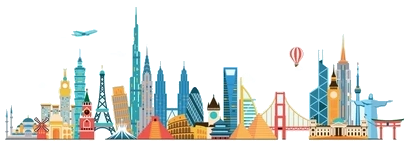 Internationale Städte
Internationale Städte
 *Kulturhauptstadt Europas
*Kulturhauptstadt Europas

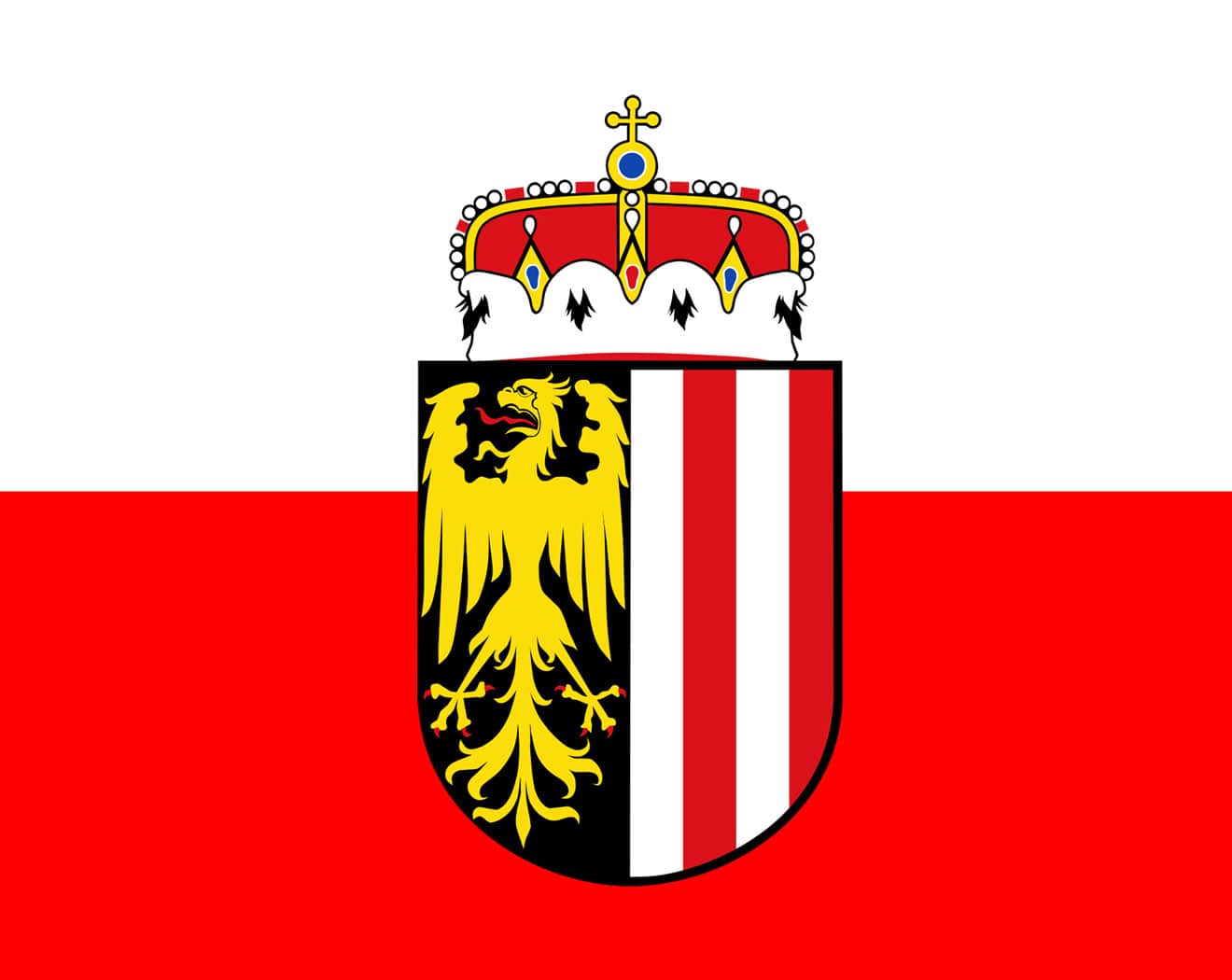 Oberösterreich
Oberösterreich
 Österreich
Österreich

 Von den Römern gegründete Städte
Von den Römern gegründete Städte
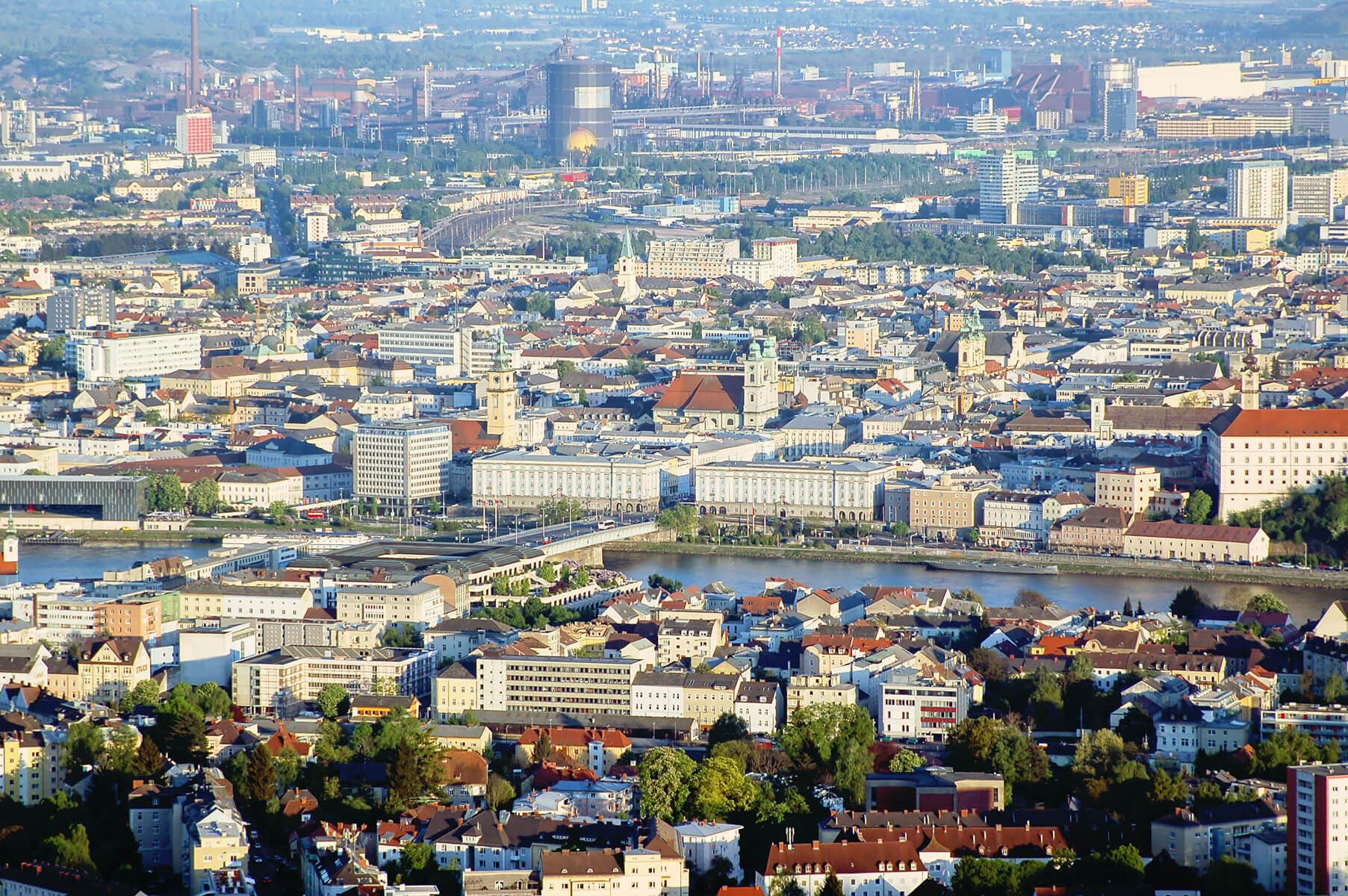
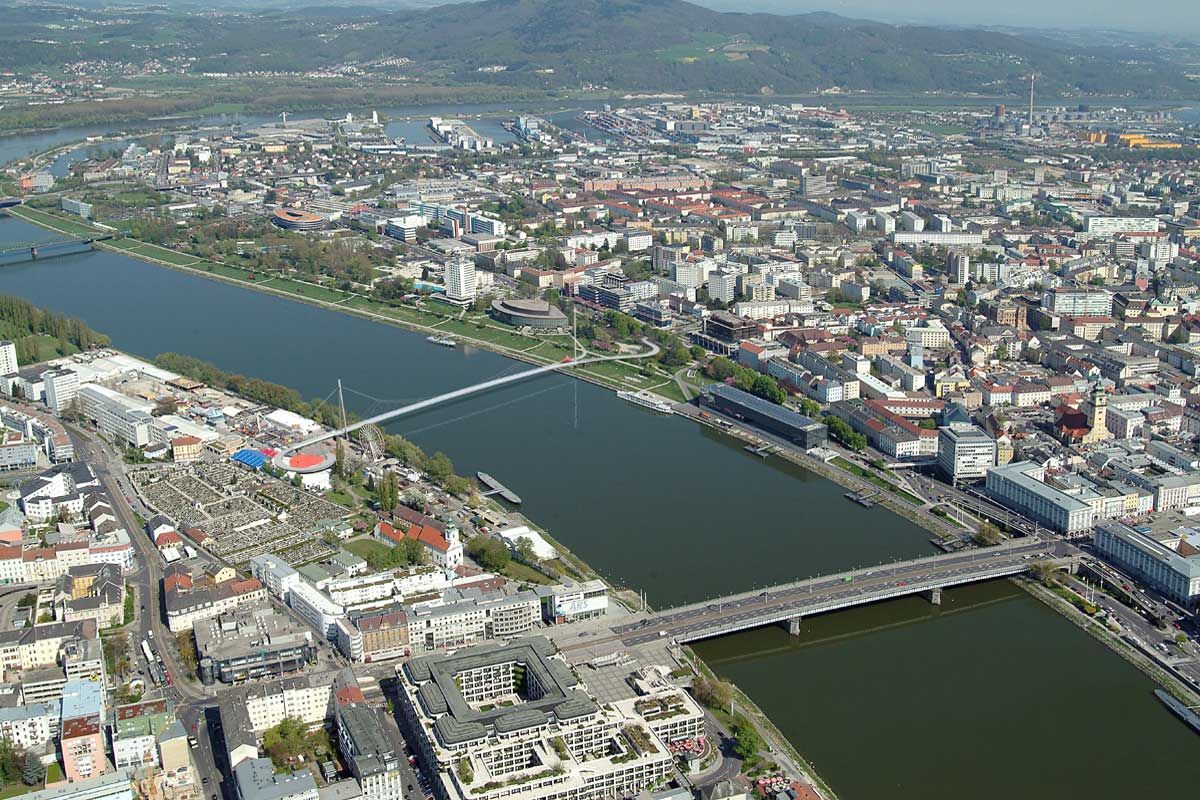
Linz ist die Landeshauptstadt von Oberösterreich und mit 210.118 Einwohnern (Stand: 1. Jänner 2023) bzw. 211.449 Einwohnern (Stand: 1. Jänner 2023[3]) nach Wien und Graz die drittgrößte Stadt Österreichs und das Zentrum des mit 823.514 Menschen (Stand 2023) zweitgrößten Ballungsraumes des Landes.[4]
Die Stadt an der Donau hat eine Fläche von 95,99 km² und ist Zentrum des oberösterreichischen Zentralraums. Als Statutarstadt ist sie sowohl Gemeinde als auch politischer Bezirk; außerdem Sitz der Bezirkshauptmannschaften der benachbarten Bezirke Linz-Land und Urfahr-Umgebung.
Nach dem Ende des Zweiten Weltkriegs (1945) hatte Linz den Ruf einer staubigen Stahlstadt, den sie dem größten Arbeitgeber, den Stahlwerken der heutigen Voestalpine AG, verdankte. Doch durch verbesserten Umweltschutz und zahlreiche Initiativen im Kulturbereich, beispielsweise Veranstaltungen wie die Linzer Klangwolke, das Brucknerfest, das Pflasterspektakel und den Prix Ars Electronica bzw. das Ars-Electronica-Festival, gewann die Stadt sukzessive ein neues Image. Seit 2004 wird jährlich das Filmfestival Crossing Europe veranstaltet. 2009 war Linz Europäische Kulturhauptstadt. 2013 wurde das neue Musiktheater am Volksgarten, ein modernes Theater- und Opernhaus, eröffnet. Linz konnte sich mit diesen und weiteren Initiativen als Kulturstadt positionieren, wobei auch Strukturen der alten Industriestadt zum Teil noch sichtbar sind. Dazu passend weist Linz als Universitätsstadt mit mehreren Universitäten auch zahlreiche Studienangebote im künstlerischen und kulturellen Bereich auf.
Die Stadt ist wahrscheinlich namensgebend für die Linzer Torte.
Die Stadt wird inoffiziell auch als Linz an der Donau bezeichnet, um nicht mit der deutschen Stadt Linz am Rhein verwechselt zu werden.



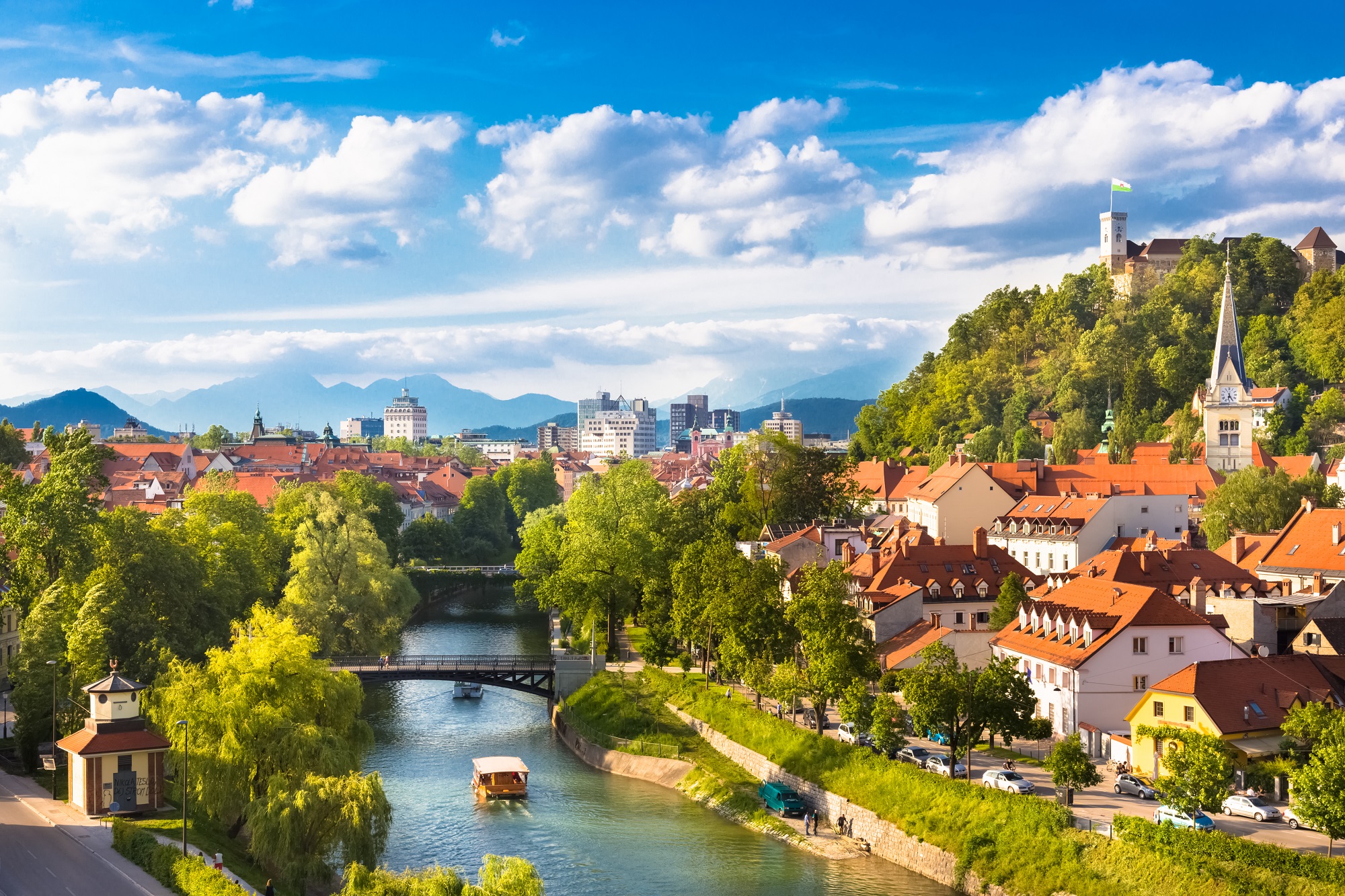
Ljubljana ( [li̯ubˈli̯aːna], umgangssprachlich/dialektal [luˈblaːna]; deutsch , v. a. in Österreich verwendet: Laibach; italienisch Lubiana) ist die Hauptstadt von Slowenien und mit 288.250 Einwohnern (2017)[1] zugleich seine größte Stadt.
Die Stadt ist das politische, wirtschaftliche und kulturelle Zentrum Sloweniens. Ljubljana ist Sitz des gleichnamigen römisch-katholischen Erzbistums und seit 1919 Universitätsstadt. 2016 wurde Ljubljana durch die Gemeinschaft Evangelischer Kirchen in Europa der Ehrentitel „Reformationsstadt Europas“ verliehen.[2]
卢布尔雅那(斯洛文尼亚语、匈牙利语:Ljubljana),近似汉音为“溜布俩那”,德语称莱巴赫(Laibach),意大利语称卢比亚纳(Lubiana),斯洛文尼亚的首都、该国最大城市和11个特别市之一。面积约170平方千米,人口27.86万(2007年统计)。
卢布尔雅那是斯洛文尼亚的政治、经济和文化中心。该市是斯洛文尼亚中央政府及其各部、国会和总统的驻地。由于交通联系、产业集中、科研机构和产业传统等方面的优势,该市在斯洛文尼亚得以拥有首席经济地位。
卢布尔雅那地处阿尔卑斯山山麓的河谷盆地,风景宜人。城市的建筑氛围明显受到了来自奥地利和意大利的强烈影响,位于河畔的市中心地带,遍布文艺复兴风格、巴洛克风格、新古典主义和新艺术运动风格的古老建筑与桥梁,高地上始建于中世纪的城堡则俯瞰整个古城。卢布尔雅那的另一个特别之处,是其著名的非主流文化中心Metelkova,在反传统的青年人中颇有影响。
リュブリャナ(スロベニア語: Ljubljana 言語発音: [ljuˈbljaːna] (![]() 音声ファイル)、ドイツ語: Laibach、イタリア語: Lubiana、ラテン語: Labacum, Aemona)[2]は、スロベニアの都市およびそれを中心とした基礎自治体でスロベニアの首都である。
音声ファイル)、ドイツ語: Laibach、イタリア語: Lubiana、ラテン語: Labacum, Aemona)[2]は、スロベニアの都市およびそれを中心とした基礎自治体でスロベニアの首都である。
Ljubljana (Slovene: [ljuˈbljàːna] (![]() listen),[5] locally also [luˈblàːna]; also known by other, historical names) is the capital and largest city of Slovenia.[6][7] It has been the cultural, educational, economic, political, and administrative center of independent Slovenia since 1991. Its central geographic location within Slovenia, transport connections, concentration of industry, scientific and research institutions, and cultural tradition are contributing factors to its leading position.
listen),[5] locally also [luˈblàːna]; also known by other, historical names) is the capital and largest city of Slovenia.[6][7] It has been the cultural, educational, economic, political, and administrative center of independent Slovenia since 1991. Its central geographic location within Slovenia, transport connections, concentration of industry, scientific and research institutions, and cultural tradition are contributing factors to its leading position.
During antiquity, a Roman city called Emona stood in the area.[8] Ljubljana itself was first mentioned in the first half of the 12th century. It was under Habsburg rule from the Middle Ages until the dissolution of the Austro-Hungarian Empire in 1918. Situated at the middle of a trade route between the northern Adriatic Sea and the Danube region, it was the historical capital of Carniola,[9] one of the Slovene-inhabited parts of the Habsburg Monarchy.[6]
Ljubljana ou plus rarement Lubiana[réf. nécessaire] (API /lju'bljana/, en allemand Laibach (/'lɑɪbaχ/), en italien Lubiana (/lu'bjaːna/), est la ville principale et la capitale de la Slovénie. Ville d'environ 280 000 habitants1, elle a été influencée tout au long de son histoire par différentes cultures du fait de sa position géographique charnière entre les cultures germanique, latine et slave. Depuis 1991, la ville est le centre économique et culturel principal de la Slovénie devenue indépendante de la Yougoslavie.
Lubiana (in sloveno , pronuncia ljuˈbljaːna[2]; in tedesco Laibach; in latino Labacum, anticamente Aemona) è la capitale e la più grande città della Slovenia.
Situata nel centro del paese, adagiata sul piccolo fiume Ljubljanica, la città possiede una popolazione di circa 287.218 abitanti[3] ed è divisa in 17 distretti e ha 37 frazioni. È considerata il cuore culturale, scientifico, economico, politico e amministrativo della Slovenia con la sede del governo centrale, del Parlamento, dell'Ufficio del Presidente, degli organi amministrativi e di tutti i ministeri della nazione.
Nel corso della sua storia è stata influenzata dalla sua posizione geografica, all'incrocio della cultura tedesca, slava e latina. La città pur essendo composta da architetture prevalentemente moderne conserva nel centro storico alcuni edifici che si rifanno allo stile barocco e all'art nouveau. Alcuni fattori che contribuiscono alla sua situazione economica sono la presenza di collegamenti viari, la concentrazione di industrie e istituti di ricerca scientifica.
Liubliana1 (en esloveno, Ljubljana, pronunciado ![]() /ljuˈbljàːna/ (?·i); en alemán, Laibach /'lɑɪbaχ/; en italiano, Lubiana /lub'jaːna/) es la capital y mayor ciudad de Eslovenia. En 2008 contaba con 270.828 habitantes,23 repartidos por una superficie de 275 km².
/ljuˈbljàːna/ (?·i); en alemán, Laibach /'lɑɪbaχ/; en italiano, Lubiana /lub'jaːna/) es la capital y mayor ciudad de Eslovenia. En 2008 contaba con 270.828 habitantes,23 repartidos por una superficie de 275 km².
Nacida como campamento militar romano de la Legio XV Apollinaris a mediados del siglo I a. C.,4 su carácter de ciudad se consolidó con la fundación de la Colonia Iulia Emona años más tarde.5 Tras sucesivas destrucciones, en el siglo VI se instalaron los antepasados de los eslovenos, y en el siglo XI cayeron bajo el dominio de los francos.6 Desde 1278, tras su conquista por parte de Rodolfo I de Habsburgo, la ciudad pasó a manos de los Habsburgo, situación que perduró hasta 1797.6
Durante el período napoleónico, Liubliana fue capital de las Provincias Ilirias y entre 1816 y 1849 lo fue del Reino de Iliria.7 En 1918, tras la Primera Guerra Mundial, se incorpora al Reino de los Serbios, Croatas y Eslovenos, y tras la Segunda Guerra Mundial se convirtió en la capital de la República Socialista de Eslovenia, formando parte de Yugoslavia.8 En 1991, y tras un conflicto bélico, Eslovenia se independizó de Yugoslavia, siendo desde entonces Liubliana la capital del país.
Su patrimonio histórico y monumental, así como diversas celebraciones culturales que tienen lugar a lo largo del año, entre las que destaca el Festival Internacional de Verano, la convierten en una ciudad receptora de turismo tanto nacional como internacional. Entre sus monumentos más representativos se encuentran la Catedral, el Castillo, la Iglesia Franciscana de la Anunciación y el Puente de los Dragones, así como el conjunto de edificios modernistas. El arquitecto Jože Plečnik firmó muchos de los más destacados edificios de la ciudad.
Liubliana dispone de una red desarrollada de carreteras y ferrocarril, además de contar con un aeropuerto con vuelos internacionales e inmerso en obras de ampliación destinadas a ampliar su capacidad operativa, actualmente desbordada.9
La Universidad de Liubliana, fundada en 1919, tiene su sede en la ciudad, y en el curso 2006-07 contaba con más de 63.000 alumnos.10 Su biblioteca sumaba en 2004 1.169.090 libros.2 Cuenta además con distintos institutos culturales internacionales, como el Instituto Cervantes (España), British Council (Reino Unido) o Instituto Goethe (Alemania).11
Como capital del Estado, Liubliana alberga las sedes del gobierno (Asamblea Nacional y Consejo Nacional), ministerios, instituciones y organismos asociados, así como de la residencia oficial del presidente de Eslovenia.12 La ciudad es miembro de UCLG, UCUE, Eurocities,13 URBACT, Civitas Forum,14 Les Rencontres, European Cities Marketing15 y Global Cities Dialogue.216 En el plano económico, la ciudad mantiene una destacada posición a nivel nacional, es sede del principal mercado de valores del país, del banco de Eslovenia y de numerosas empresas nacionales.
Liubliana ha sido premiada con el título Capital Verde Europea 2016.
Лю́бляна[1] (словен. Ljubljana, до 1918 — Лайбах, нем. Laibach) — город, столица Словении. Образует городскую общину Любляна, разделённую на семнадцать районов.
Население — 258,9 тыс. человек (2014 год), или 13 % населения страны. В пределах агломерации проживает свыше 500 тысяч человек. Расположена в межгорной Люблянской котловине на берегах реки Любляницы.
Главный политический, экономический и культурный центр Словении. Концентрирует свыше 40 % ВВП страны и треть штаб-квартир крупнейших компаний Словении. Здесь находится Люблянский университет, в котором обучается свыше пятидесяти тысяч студентов. Общественный транспорт состоит из автобусов.
Историческое ядро образует крепость Град, под ним — Старый город. Остатки античных и средневековых построек; ансамбли в стилях барокко XVI—XVIII веков, модерна после землетрясения 1895 года, постройки архитектора Йоже Плечника в первой половине XX века.
С I века — римский город Эмона, обезлюдевший в V веке; как средневековое поселение известно с XII века. С 1335 по 1918 годы под немецким названием Лайбах в составе государства Габсбургов, с XIV века — административный центр Крайны. С 1918 года под словенским названием Лю́бляна — столица Словении.

 Architektur
Architektur
 England
England
 Eurovision Song Contest,ESC
Eurovision Song Contest,ESC

 Finanz
Finanz
 ***Globales Finanzzentrum/Global Financial Center
***Globales Finanzzentrum/Global Financial Center
 Fußball-Europameisterschaft 2020
Fußball-Europameisterschaft 2020

 Geschichte
Geschichte
 N 2000 - 2100 nach Christus
N 2000 - 2100 nach Christus

 Geschichte
Geschichte
 M 1500 - 2000 nach Christus
M 1500 - 2000 nach Christus

 Internationale Städte
Internationale Städte
 ***Globale wirtschaftliche Wettbewerbsfähigkeit der Städte
***Globale wirtschaftliche Wettbewerbsfähigkeit der Städte
 ITU World Championship Series
ITU World Championship Series

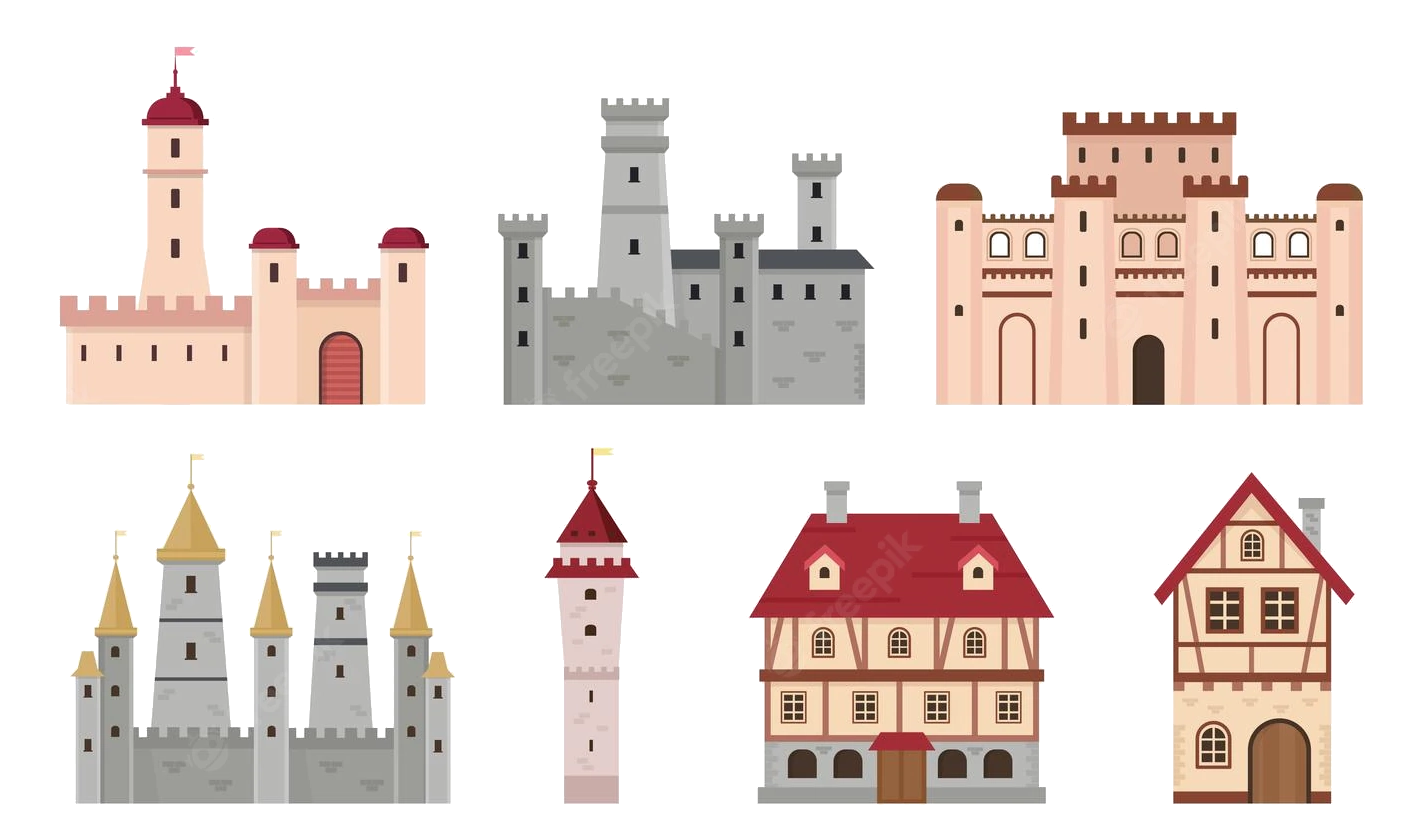 Mittelalterliche Städte in Europa
Mittelalterliche Städte in Europa
 Olympische Sommerspiele
Olympische Sommerspiele
 Olympische Sommerspiele 1908
Olympische Sommerspiele 1908
 Olympische Sommerspiele 1944
Olympische Sommerspiele 1944
 Olympische Sommerspiele 1948
Olympische Sommerspiele 1948
 Olympische Sommerspiele 2012
Olympische Sommerspiele 2012
 Seidenstraße
Seidenstraße

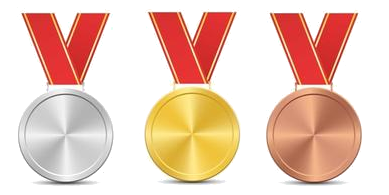 Sport
Sport
 Triathlon
Triathlon
 Vereinigtes Königreich
Vereinigtes Königreich

 Von den Römern gegründete Städte
Von den Römern gegründete Städte

 Weltkulturerbe
Weltkulturerbe

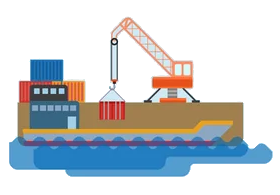 Wichtiger Hafen
Wichtiger Hafen

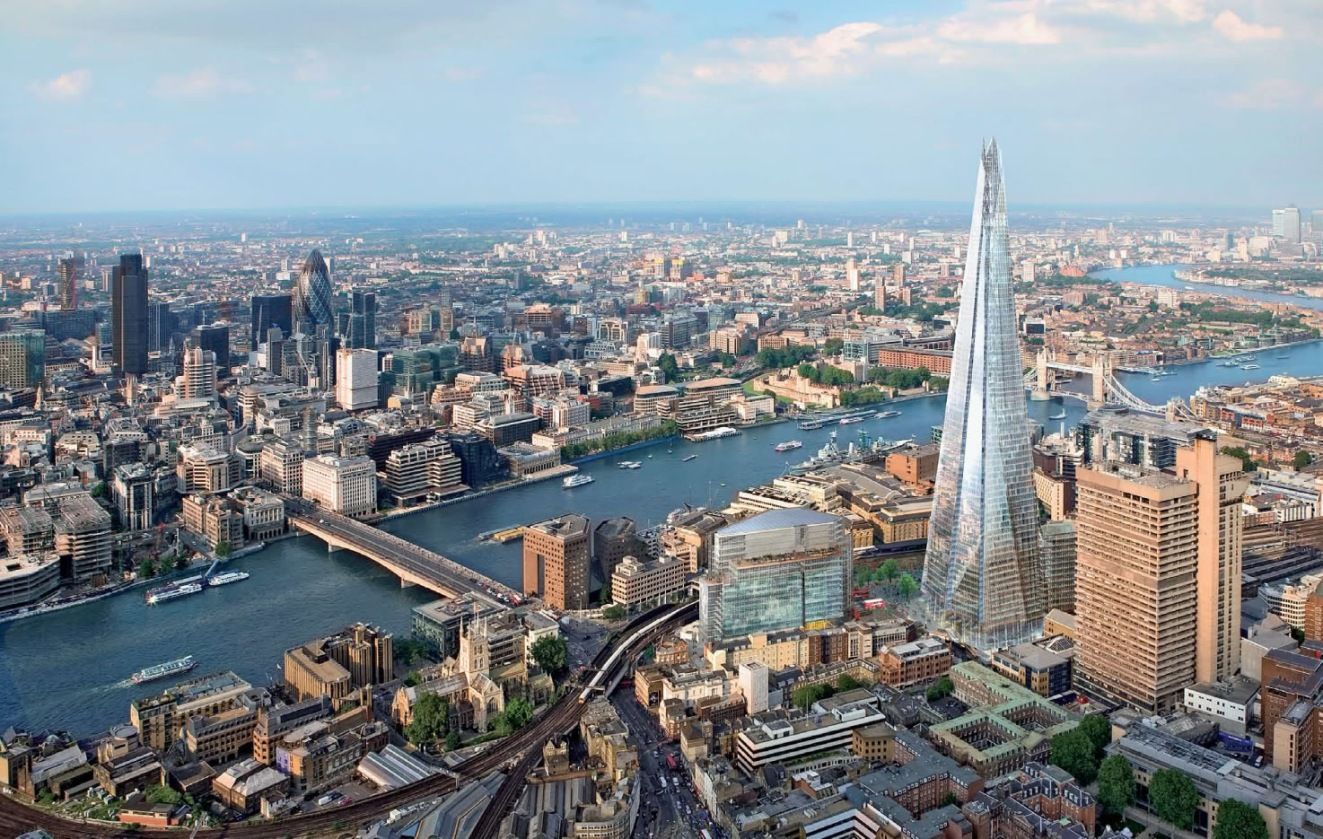
London (deutsche Aussprache [ˈlɔndɔn] oder gelegentlich [ˈlɔndən], englische Aussprache [ˈlʌndən]) ist zugleich die Hauptstadt des Vereinigten Königreiches und Englands. Die Stadt liegt an der Themse in Südostengland. Das heutige Verwaltungsgebiet mit 33 Stadtbezirken entstand im Jahr 1965 durch die Gründung von Greater London. Dort lebten 2022 rund 8,9 Millionen Menschen, davon rund 3,4 Millionen in den 13 Stadtbezirken Inner Londons.[2][4] In der gesamten Metropolregion London lebten 2019 knapp 14,4 Millionen Einwohner.[5]
Im Jahr 50 n. Chr. von den Römern als Londinium gegründet, wurde die Stadt nach der normannischen Eroberung 1066 Hauptstadt und Königssitz des Königreiches England. Bereits im Mittelalter entwickelte sich die Stadt zu einem bedeutenden internationalen Handelsplatz. Unter der Herrschaft von Elisabeth I. stieg ihre Bedeutung als Hafenstadt der Nordsee. Durch den Beginn der Industrialisierung im 18. Jahrhundert wuchs auch die Bevölkerung Londons, sodass es um 1800 eine der ersten Städte war, die mehr als eine Million Einwohner zählte. Bis 1900 versechsfachte sich die Bevölkerung, und London war bis zum Jahr 1925 die größte Stadt der Welt. Es entwickelte sich zu einem bedeutenden Zentrum der Technik und Industrie und wird bis heute zu den Weltstädten gerechnet.
London ist eines der bedeutendsten Kultur- und Handelszentren der Welt mit zahlreichen Universitäten, Hochschulen, Theatern und Museen. Mit einem BIP von 801,66 Mrd. € im Jahr 2017 ist London die größte städtische Wirtschaft Europas.[6] Die Stadt zählt außerdem neben New York City, Singapur und Hongkong zu den größten Finanzplätzen der Welt.[7] Historische Gebäude wie der Palace of Westminster oder Tower of London zählen zum UNESCO-Weltkulturerbe. Mit jährlich über 19 Millionen Touristen aus dem Ausland war London im Jahr 2016 nach Bangkok weltweit die zweitmeistbesuchte Stadt vor Paris.[8][9]
伦敦(英语:London;![]() i/ˈlʌndən/)[4]是英国首都,也是英国最大城市[5]以及其构成国英格兰的首府。位于泰晤士河流域,于公元50年由罗马人建立,取名为伦蒂尼恩,在此后两个世纪内为这一地区最重要的定居点之一[6]。伦敦的历史核心区——伦敦城仍旧维持其中世纪的界限,面积606.95平方英里(1,572.0平方千米),2019年人口为898.2万,为全英格兰最大的城市。自19世纪起,“伦敦”一称亦用于指称围绕这一核心区开发的周围地带[7]。这一城区集合自1965年起构成大伦敦行政区,由32个伦敦自治市加上伦敦城组成[8][9],由伦敦市长及伦敦议会管辖。[10][注 1]
i/ˈlʌndən/)[4]是英国首都,也是英国最大城市[5]以及其构成国英格兰的首府。位于泰晤士河流域,于公元50年由罗马人建立,取名为伦蒂尼恩,在此后两个世纪内为这一地区最重要的定居点之一[6]。伦敦的历史核心区——伦敦城仍旧维持其中世纪的界限,面积606.95平方英里(1,572.0平方千米),2019年人口为898.2万,为全英格兰最大的城市。自19世纪起,“伦敦”一称亦用于指称围绕这一核心区开发的周围地带[7]。这一城区集合自1965年起构成大伦敦行政区,由32个伦敦自治市加上伦敦城组成[8][9],由伦敦市长及伦敦议会管辖。[10][注 1]
伦敦亦是一个全球城市[11][12],[13]在文艺、商业、教育、娱乐、时尚、金融、健康、媒体、专业服务、研究与开发、旅游和交通方面都具有显著的地位[14][15][16][17],同时还是全球主要金融中心之一[18][19][20],根据计算,为全球国内生产总值第六大的都市区[注 2][21][22]。伦敦亦是全球文化首都之一[23][24][25][26],还是全球国际访客数量最多的城市[27],根据客流量计算则拥有全球最为繁忙的城市机场系统[28]。伦敦是全球领先投资地[29],吸引很多国际零售商来投资[30],个人净资产值高于其它城市[31]。伦敦拥有43所大学,其高等教育机构密集度在全欧洲最高[32]。2012年,伦敦成为史上首座三次举办现代夏季奥林匹克运动会的城市。[33]
伦敦的人口和文化十分多样,在大伦敦地区内使用的语言就超过300种[34]。这一区域2015年的官方统计人口为8,673,713[35],人口占全英国的12.5%[36]。在2020年英国脱离欧盟之前,伦敦的城市区为欧盟第二大,根据2011年普查其人口达到9,787,426,仅次于巴黎[37]。其都市区为欧洲最大,人口达13,614,409[注 3][38],而大伦敦政府则称伦敦都市区的总人口为2,100万[39]。1831年—1925年间,伦敦为世界最大的城市。[40]
有四项世界遗产位于伦敦,分别为:伦敦塔;邱园;威斯敏斯特宫、威斯敏斯特教堂和圣玛格丽特教堂;以及格林尼治历史区(其中的皇家天文台为本初子午线、0°经线和格林尼治标准时间所经之地)[41]。其他著名景点包括白金汉宫、伦敦眼、皮卡迪利圆环、圣保罗座堂、伦敦塔桥、特拉法加广场和碎片大厦。伦敦亦是诸多博物馆、画廊、图书馆、体育运动及其他文化机构的所在地,包括大英博物馆、国家美术馆、泰特现代艺术馆、大英图书馆以及40家西区剧院[42]。伦敦地铁是全球最古老的地下铁路网络。
ロンドン(英語: London [ˈlʌndən] (![]() 音声ファイル))はグレートブリテンおよび北アイルランド連合王国およびこれを構成するイングランドの首都。イギリスやヨーロッパ域内で最大の都市圏を形成している。ロンドンはテムズ川河畔に位置し、2,000年前のローマ帝国によるロンディニウム創建が都市の起源である[4]。ロンディニウム当時の街の中心部は、現在のシティ・オブ・ロンドン(シティ)に当たる地域にあった。シティの市街壁内の面積は約1平方マイルあり、中世以来その範囲はほぼ変わっていない。少なくとも19世紀以降、「ロンドン」の名称はシティの市街壁を越えて開発が進んだシティ周辺地域をも含めて用いられている[5]。ロンドンは市街地の大部分はコナベーションにより形成されている[6]。ロンドンを管轄するリージョンであるグレーター・ロンドンでは[7]、選挙で選出されたロンドン市長とロンドン議会により統治が行われている[8]。
音声ファイル))はグレートブリテンおよび北アイルランド連合王国およびこれを構成するイングランドの首都。イギリスやヨーロッパ域内で最大の都市圏を形成している。ロンドンはテムズ川河畔に位置し、2,000年前のローマ帝国によるロンディニウム創建が都市の起源である[4]。ロンディニウム当時の街の中心部は、現在のシティ・オブ・ロンドン(シティ)に当たる地域にあった。シティの市街壁内の面積は約1平方マイルあり、中世以来その範囲はほぼ変わっていない。少なくとも19世紀以降、「ロンドン」の名称はシティの市街壁を越えて開発が進んだシティ周辺地域をも含めて用いられている[5]。ロンドンは市街地の大部分はコナベーションにより形成されている[6]。ロンドンを管轄するリージョンであるグレーター・ロンドンでは[7]、選挙で選出されたロンドン市長とロンドン議会により統治が行われている[8]。
ロンドンは屈指の世界都市として、芸術、商業、教育、娯楽、ファッション、金融、ヘルスケア、メディア、専門サービス、調査開発、観光、交通といった広範囲にわたる分野において強い影響力がある[9]。また、ニューヨークと並び世界をリードする金融センターでもあり[10][11][12]、2009年時点の域内総生産は世界第5位で、欧州域内では最大である[13]。世界的な文化の中心でもある[14][15][16][17]。ロンドンは世界で最も来訪者の多い都市であり[18]、単一の都市圏としては世界で最も航空旅客数が多い[19]。欧州では最も高等教育機関が集積する都市であり、ロンドンには大学が43校ある[20]。2012年のロンドンオリンピック開催に伴い、1908年、1948年に次ぐ3度目のオリンピック開催となり、同一都市としては史上最多となる[21]。
ロンドンは文化的な多様性があり、300以上の言語が使われている[22]。2011年3月時点のロンドンの公式の人口は817万4,100人であり、欧州の市域人口では最大で[23][24]、イギリス国内の全人口の12.7%を占めている[25]。グレーター・ロンドンの都市的地域は、パリの都市的地域に次いで欧州域内で第2位となる8,278,251人の人口を有し[26]、ロンドンの都市圏の人口は1200万人[27]から1400万人[28]に達し、欧州域内では最大である。ロンドンは1831年から1925年にかけて、世界最大の人口を擁する都市であった[29]。2012年にマスターカードが公表した統計によると、ロンドンは世界で最も外国人旅行者が訪れる都市である[30]。
イギリスの首都とされているが、他国の多くの首都と同様、ロンドンの首都としての地位を明示した文書は存在しない[31]。
London (/ˈlʌndən/ ( listen) LUN-dən) is the capital and most populous city of England and the United Kingdom.[8][9] Standing on the River Thames in the south east of the island of Great Britain, London has been a major settlement for two millennia. It was founded by the Romans, who named it Londinium.[10] London's ancient core, the City of London, largely retains its 1.12-square-mile (2.9 km2) medieval boundaries. Since at least the 19th century, "London" has also referred to the metropolis around this core, historically split between Middlesex, Essex, Surrey, Kent and Hertfordshire,[11][12][13] which today largely makes up Greater London,[14][15][note 1] a region governed by the Mayor of London and the London Assembly.[16][note 2][17]
listen) LUN-dən) is the capital and most populous city of England and the United Kingdom.[8][9] Standing on the River Thames in the south east of the island of Great Britain, London has been a major settlement for two millennia. It was founded by the Romans, who named it Londinium.[10] London's ancient core, the City of London, largely retains its 1.12-square-mile (2.9 km2) medieval boundaries. Since at least the 19th century, "London" has also referred to the metropolis around this core, historically split between Middlesex, Essex, Surrey, Kent and Hertfordshire,[11][12][13] which today largely makes up Greater London,[14][15][note 1] a region governed by the Mayor of London and the London Assembly.[16][note 2][17]
London is one of the leading global cities[18][19] in the arts, commerce, education, entertainment, fashion, finance, healthcare, media, professional services, research and development, tourism and transportation.[20][21][22] It is the world's largest financial centre[23][24][25][26] and has the fifth or sixth largest metropolitan area GDP in the world.[note 3][27][28] London is often regarded as a world cultural capital.[29][30][31] It is the world's most-visited city as measured by international arrivals[32] and has the world's largest city airport system measured by passenger traffic.[33] It is the world's leading investment destination,[34][35][36][37] hosting more international retailers[38][39] and ultra high-net-worth individuals[40][41] than any other city. London's universities form the largest concentration of higher education institutes in Europe.[42] In 2012, London became the first city to have hosted the modern Summer Olympic Games three times.[43]
London has a diverse range of people and cultures, and more than 300 languages are spoken in the region.[44] Its estimated mid-2016 municipal population (corresponding to Greater London) was 8,787,892,[4] the largest of any city in the European Union[45] and accounting for 13.4% of the UK population.[46] London's urban area is the second most populous in the EU, after Paris, with 9,787,426 inhabitants at the 2011 census.[47] The city's metropolitan area is the most populous in the EU with 14,040,163 inhabitants in 2016,[note 4][3] while the Greater London Authority states the population of the city-region (covering a large part of the south east) as 22.7 million.[48][49] London was the world's most populous city from around 1831 to 1925.[50]
London contains four World Heritage Sites: the Tower of London; Kew Gardens; the site comprising the Palace of Westminster, Westminster Abbey, and St Margaret's Church; and the historic settlement of Greenwich (in which the Royal Observatory, Greenwich defines the Prime Meridian, 0° longitude, and GMT).[51] Other landmarks include Buckingham Palace, the London Eye, Piccadilly Circus, St Paul's Cathedral, Tower Bridge, Trafalgar Square and The Shard. London is home to numerous museums, galleries, libraries, sporting events and other cultural institutions, including the British Museum, National Gallery, Natural History Museum, Tate Modern, British Library and West End theatres.[52] The London Underground is the oldest underground railway network in the world.
Londres (prononcé [lɔ̃dʁ] ; en anglais London [ˈlʌn.dən]), située dans le Sud-Est de la Grande-Bretagne, est la capitale et la plus grande ville de l'Angleterre et du Royaume-Uni. Longtemps capitale de l'Empire britannique, elle est désormais le siège du Commonwealth of Nations.
Fondée il y a presque 2 000 ans par les Romains sous le nom de Londinium, Londres était au XIXe siècle la ville la plus peuplée du monde. Bien que largement dépassée dans ce domaine par de nombreuses mégapoles, elle reste une métropole de tout premier plan1, en raison de son rayonnement et de sa puissance économique, dû notamment à sa place de premier centre financier mondial2. Londres se place dans la triade des grands centres financiers du monde, avec New York et Hong Kong, en étant la principale place bancaire et financière d'Europe. Cette trilogie est appelée par les médias anglophones « Nylonkong »3.
La région de Londres, composée de l'Inner London et de l'Outer London, comptait environ 8 673 000 habitants en 2015 et réalise un cinquième du produit intérieur brut du Royaume-Uni4. En 2015, l'aire urbaine de Londres comptait 9 787 426 habitants et son aire métropolitaine 12 317 800 habitants. En Europe, seules les agglomérations de Moscou, Istanbul et Paris5 ont un poids démographique comparable. Ses habitants s'appellent les Londoniens (en anglais : Londoners).
Londres, la seule ville du monde à ce jour à avoir organisé trois fois les Jeux olympiques (1908, 1948, 2012), est dynamique et très diverse sur le plan culturel. Elle joue un rôle important dans l'art et dans la mode. Elle reçoit 28 millions de touristes par an et compte quatre sites inscrits au patrimoine mondial ainsi que de nombreux monuments emblématiques : le palais de Westminster, le Tower Bridge, la tour de Londres, l'abbaye de Westminster, le palais de Buckingham, Big Ben ainsi que des institutions renommées comme le British Museum ou la National Gallery.
Londra (AFI: [ˈlondra];[2] in inglese britannico: London, [ˈlʌndən][3]) è la capitale e maggiore città dell'Inghilterra e del Regno Unito, con i suoi 8 825 000 abitanti.
La sua estensione territoriale la rende la terza città più estesa d'Europa, preceduta da Mosca e Istanbul e seguita da Roma e Berlino. L'area metropolitana conta infatti circa 14 milioni di residenti e si estende per svariate decine di chilometri lungo la valle del Tamigi, fino al suo enorme estuario. Molti degli abitanti, chiamati londinesi (Londoners), provengono dall'estero o sono di origine straniera, risultando così una delle città più cosmopolite e multietniche del mondo. Londra è stata la capitale indiscussa dell'Impero britannico e, quindi, meta di flussi migratori durante e soprattutto dopo la fine dell'era coloniale.
Ha il più elevato PIL fra tutte le città europee, ed il quinto al mondo.[4] I suoi sei aeroporti internazionali ne fanno il più grande snodo del traffico aereo globale; è anche sede del più antico sistema di metropolitana del mondo, la London Underground (The Tube). È la seconda città più visitata al mondo dal turismo internazionale, dopo Bangkok in Asia.[5]
A Londra hanno sede numerose istituzioni, organizzazioni e società internazionali. Vi si trovano importanti musei, teatri e sale da concerto; la città contiene quattro patrimoni dell'umanità. Inoltre, vi risiede stabilmente il monarca del Regno Unito presso Buckingham Palace ed il parlamento; il primo ministro occupa l'abitazione al 10 Downing Street. Per tutte le caratteristiche elencate, Londra conquista il titolo di Città globale, classificandosi come l'unica città britannica nella lista delle Città Mondiali Alfa[6].
Dal 2000, con le riforme volute dal governo di Tony Blair, Londra è amministrata secondo una speciale legislazione sui generis[7] che determina e coordina i poteri della superiore Autorità della Grande Londra, composta dal Sindaco e dall'Assemblea di Londra, con quelli di 33 borghi londinesi a livello inferiore.[8
Londres (London en inglés,  ˈlʌndən (?·i)) es la capital y mayor ciudad de Inglaterra y del Reino Unido.23 Situada a orillas del río Támesis, Londres es un importante asentamiento humano desde que fue fundada por los romanos con el nombre de Londinium hace casi dos milenios.4 El núcleo antiguo de la urbe, la City de Londres, conserva básicamente su perímetro medieval de una milla cuadrada. Desde el siglo XIX el nombre «Londres» también hace referencia a toda la metrópolis desarrollada alrededor de este núcleo.5 El grueso de esta
ˈlʌndən (?·i)) es la capital y mayor ciudad de Inglaterra y del Reino Unido.23 Situada a orillas del río Támesis, Londres es un importante asentamiento humano desde que fue fundada por los romanos con el nombre de Londinium hace casi dos milenios.4 El núcleo antiguo de la urbe, la City de Londres, conserva básicamente su perímetro medieval de una milla cuadrada. Desde el siglo XIX el nombre «Londres» también hace referencia a toda la metrópolis desarrollada alrededor de este núcleo.5 El grueso de esta

 Architektur
Architektur
 Eurovision Song Contest,ESC
Eurovision Song Contest,ESC
 FIFA Fussball-Weltmeisterschaft 1990
FIFA Fussball-Weltmeisterschaft 1990
 Fußball-Europameisterschaft 2020
Fußball-Europameisterschaft 2020

 Geschichte
Geschichte
 Italien
Italien

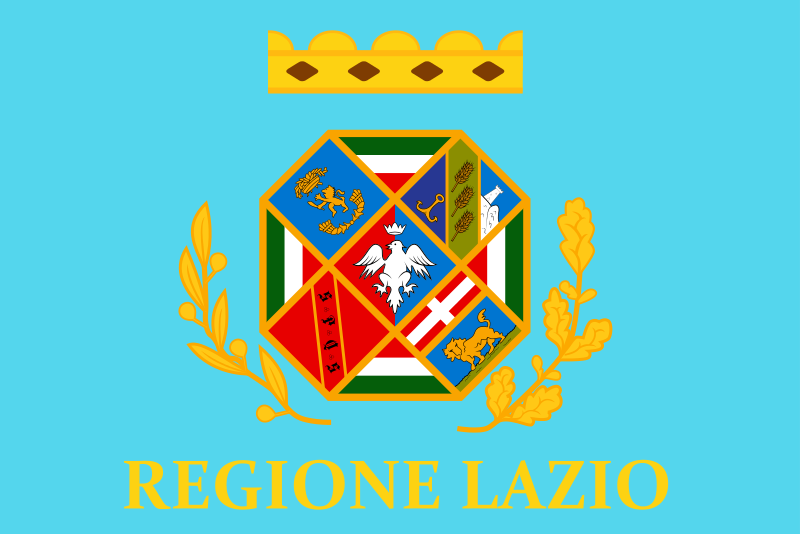 Lazio
Lazio
 Rom
Rom
 Olympische Sommerspiele
Olympische Sommerspiele
 Olympische Sommerspiele 1960
Olympische Sommerspiele 1960
 Seidenstraße
Seidenstraße

 Von den Römern gegründete Städte
Von den Römern gegründete Städte
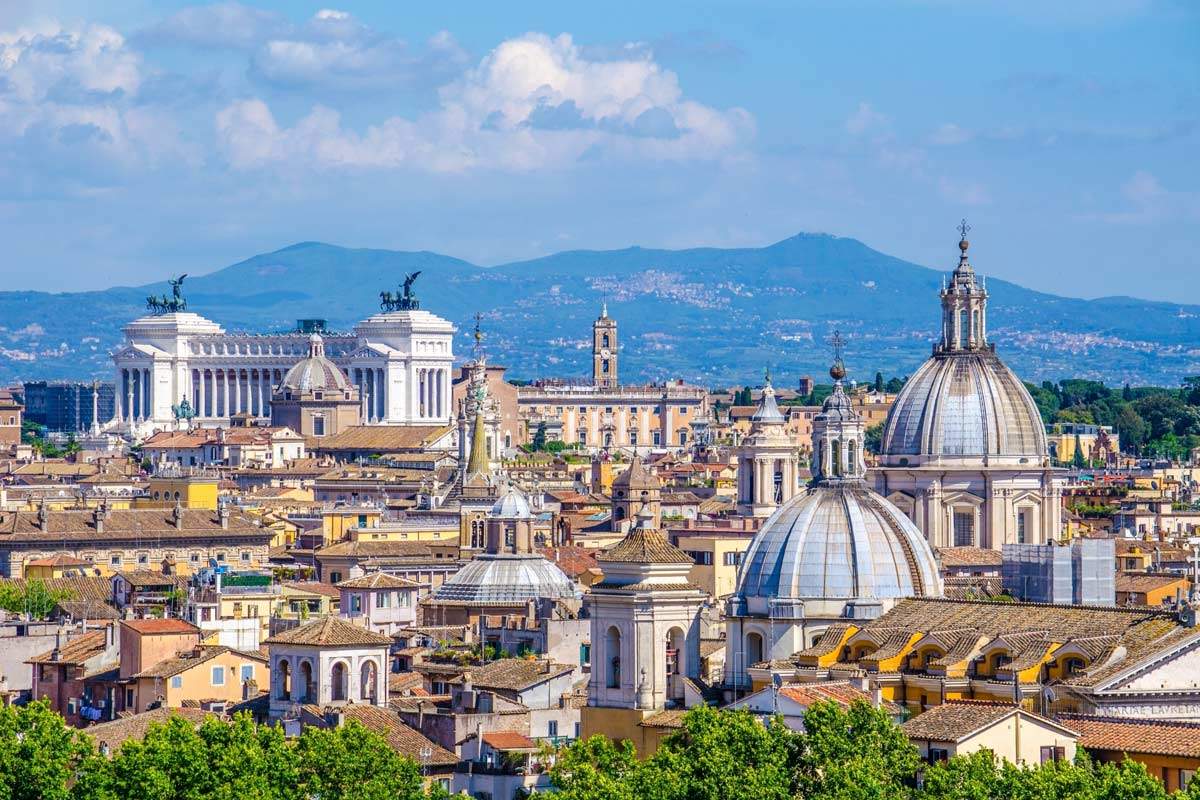
Rom (lateinisch Rōma; italienisch Roma [ˈroːma]), amtlich Roma Capitale, ist die Hauptstadt Italiens.[2] Mit etwa drei Millionen Einwohnern im Stadtgebiet bzw. rund vier Millionen Einwohnern in der Agglomeration ist sie die größte Stadt Italiens. Rom liegt in der Region Latium an den Ufern des Flusses Tiber.
Rom wurde erstmals im 1. Jahrhundert v. Chr. vom Dichter Tibull[3] Ewige Stadt genannt. Diese Bezeichnung, ursprünglich eine Antonomasie, wurde zu einem Ehrennamen für die Stadt wegen der Bedeutung in ihrer bis heute drei Jahrtausende umspannenden Geschichte.
Sie ist heute Verwaltungssitz der Region Latium und der Metropolitanstadt Rom, bis 2015 Provinz Rom. Innerhalb der Stadt bildet der unabhängige Staat der Vatikanstadt eine Enklave. Der Vatikan ist der Sitz des Papstes, das heißt des Bischofs von Rom und Oberhaupts der römisch-katholischen Kirche sowie des Heiligen Stuhls. Zudem ist Rom seit 1834 Sitz des Malteser-Ritterordens, der ein eigenständiges (jedoch nichtstaatliches) Völkerrechtssubjekt ist, sowie der UNO-Unterorganisationen FAO, IFAD und WFP.
Rom ist außerordentlich reich an bedeutenden Bauten und Museen und Ziel zahlreicher Touristen. Die Altstadt von Rom, der Petersdom und die Vatikanstadt wurden von der UNESCO im Jahr 1980 zum Weltkulturerbe erklärt.[4]
In einer Rangliste der Städte nach ihrer Lebensqualität belegte Rom im Jahre 2018 den 57. Platz unter 231 untersuchten Städten weltweit.[5]
罗马(意大利语:Roma)是意大利首都及全国政治、经济、文化和交通中心,是世界著名的历史文化名城,古罗马文明的发祥地,因建城历史悠久并保存大量古迹而被昵称为“永恒之城”[1][2]。其位于意大利半岛中西部,台伯河下游平原地的七座小山丘上,市中心面积有1200多平方公里。罗马同时是全世界天主教会的中枢,拥有700多座教堂与修道院、7所天主教大学,市内的梵蒂冈城是罗马主教即天主教会教宗及圣座的驻地。罗马与佛罗伦萨同为意大利文艺复兴中心[3],现今仍保存有相当丰富的文艺复兴与巴洛克风貌;1980年,罗马的历史城区被列为世界文化遗产[4]。
ローマ(伊: Roma、羅: Roma)は、イタリアの首都。欧州有数の世界都市であり、ラツィオ州の州都、ローマ県のコムーネの一つで、ローマ県の県都でもある。英語とフランス語の表記は「Rome」。
イタリアの首都で政治、経済、文化の中心地である。当市に囲まれるようにローマ教皇の居住するバチカン市国があり、そこは全世界のカトリック教徒にとっての中心地で、現在は外国であるが歴史・宗教・文化的にはローマ市地域と密接な関わりがある。そして昔のローマの大国さを表した「ローマは一日にして成らず」という諺もある。また、領土を持たないマルタ騎士団の本部、マルタ宮殿がコンドッティ通り68にあり、治外法権が認められている。
2014年現在の人口は約286万人で、イタリアで最も人口が多い都市である。2010年の都市的地域の人口では271万人であり、世界128位である[4]。 かつてのローマ帝国の首都であったため西洋文明圏を代表する都市のひとつであり、カトリック教会の中枢であり、そしてまたその美しさから『永遠の都』と称される。
2014年、アメリカのシンクタンクが公表したビジネス、人材、文化、政治などを対象とした総合的な世界都市ランキングにおいて、世界第32位の都市と評価されており、イタリアの都市では第1位であった[5]。
観光都市としての側面もあり、2012年には7,800,000人の観光客が訪れた[6]。後述の「観光」、「聖地として」も参照。
Rome (Italian: Roma  i[ˈroːma]; Latin: Roma [ˈroːma]) is the capital city of Italy and a special comune (named Comune di Roma Capitale). Rome also serves as the capital of the Lazio region. With 2,872,800 residents in 1,285 km2 (496.1 sq mi),[1] it is also the country's most populated comune. It is the fourth-most populous city in the European Union by population within city limits. It is the centre of the Metropolitan City of Rome, which has a population of 4.3 million residents.[2] Rome is located in the central-western portion of the Italian Peninsula, within Lazio (Latium), along the shores of the Tiber. The Vatican City is an independent country inside the city boundaries of Rome, the only existing example of a country within a city: for this reason Rome has been often defined as capital of two states.[3][4]
i[ˈroːma]; Latin: Roma [ˈroːma]) is the capital city of Italy and a special comune (named Comune di Roma Capitale). Rome also serves as the capital of the Lazio region. With 2,872,800 residents in 1,285 km2 (496.1 sq mi),[1] it is also the country's most populated comune. It is the fourth-most populous city in the European Union by population within city limits. It is the centre of the Metropolitan City of Rome, which has a population of 4.3 million residents.[2] Rome is located in the central-western portion of the Italian Peninsula, within Lazio (Latium), along the shores of the Tiber. The Vatican City is an independent country inside the city boundaries of Rome, the only existing example of a country within a city: for this reason Rome has been often defined as capital of two states.[3][4]
Rome's history spans 28 centuries. While Roman mythology dates the founding of Rome at around 753 BC, the site has been inhabited for much longer, making it one of the oldest continuously occupied sites in Europe.[5] The city's early population originated from a mix of Latins, Etruscans, and Sabines. Eventually, the city successively became the capital of the Roman Kingdom, the Roman Republic and the Roman Empire, and is regarded as the birthplace of Western civilisation and by some as the first ever metropolis.[6] It was first called The Eternal City (Latin: Urbs Aeterna; Italian: La Città Eterna) by the Roman poet Tibullus in the 1st century BC, and the expression was also taken up by Ovid, Virgil, and Livy.[7][8] Rome is also called the "Caput Mundi" (Capital of the World). After the fall of the Western Empire, which marked the beginning of the Middle Ages, Rome slowly fell under the political control of the Papacy, which had settled in the city since the 1st century AD, until in the 8th century it became the capital of the Papal States, which lasted until 1870. Beginning with the Renaissance, almost all the popes since Nicholas V (1447–1455) pursued over four hundred years a coherent architectural and urban programme aimed at making the city the artistic and cultural centre of the world.[9] In this way, Rome became first one of the major centres of the Italian Renaissance,[10] and then the birthplace of both the Baroque style and Neoclassicism. Famous artists, painters, sculptors and architects made Rome the centre of their activity, creating masterpieces throughout the city. In 1871, Rome became the capital of the Kingdom of Italy, which, in 1946, became the Italian Republic.
Rome has the status of a global city.[11][12][13] In 2016, Rome ranked as the 14th-most-visited city in the world, 3rd most visited in the European Union, and the most popular tourist attraction in Italy.[14] Its historic centre is listed by UNESCO as a World Heritage Site.[15] Monuments and museums such as the Vatican Museums and the Colosseum are among the world's most visited tourist destinations with both locations receiving millions of tourists a year, and the city hosted the 1960 Summer Olympics. Rome is the seat of several specialized agencies of the United Nations, such as the Food and Agriculture Organization (FAO), the World Food Programme (WFP) and the International Fund for Agricultural Development (IFAD). The city hosts the headquarters of many international business companies, such as Eni, Enel, TIM, Leonardo S.p.A., and national and international banks such as Unicredit and BNL. Its business district, called EUR, is the base of many companies involved in the oil industry, the pharmaceutical industry, and financial services. Rome is also an important fashion and design centre thanks to renowned international brands centered in the city. Rome's Cinecittà Studios have been the set of many Academy Award–winning movies.
Roma (AFI: /ˈroma/[5], pronuncia[?·info]) è la capitale della Repubblica Italiana, nonché capoluogo dell'omonima città metropolitana e della regione Lazio. La città è dotata di un ordinamento amministrativo speciale, denominato Roma Capitale, disciplinato da una legge dello Stato.[6]
Con 2 869 322 abitanti è il comune più popoloso d'Italia e il quarto dell'Unione europea,[3] mentre con 1 287,36 km² è il comune più esteso d'Italia e la quinta città più estesa d'Europa dopo Mosca, Istanbul, Londra e San Pietroburgo. È inoltre la città europea con la maggiore superficie di aree verdi[7].
Fondata secondo la tradizione il 21 aprile del 753 a.C. (sebbene scavi recenti nel Lapis Niger farebbero risalire la fondazione a 2 secoli prima[8][9]), nel corso dei suoi tre millenni di storia è stata la prima metropoli dell'umanità,[10] cuore pulsante di una delle più importanti civiltà antiche, che influenzò la società, la cultura, la lingua, la letteratura, l'arte, l'architettura, la filosofia, la religione, il diritto e i costumi dei secoli successivi. Luogo di origine della lingua latina, fu capitale dell'Impero romano che estendeva il suo dominio su tutto il bacino del Mediterraneo e gran parte dell'Europa, dello Stato Pontificio, sottoposto al potere temporale dei papi e del Regno d'Italia (dal 1871 al 1946). Per antonomasia, è definita l'Urbe, Caput Mundi e Città eterna.
Il suo centro storico, delimitato dal perimetro delle mura aureliane, sovrapposizione di testimonianze di quasi tre millenni è espressione del patrimonio storico, artistico e culturale del mondo occidentale europeo[11] e, nel 1980, insieme alle proprietà extraterritoriali della Santa Sede nella città, è stato inserito nella lista dei Patrimoni dell'umanità dell'UNESCO, provvedimento esteso nel 1990 ai territori compresi all'interno delle mura gianicolensi, edificate per volere di papa Urbano VIII.[12][13]
Roma, cuore della cristianità cattolica, è l'unica città al mondo ad ospitare al proprio interno un intero Stato, l'enclave della Città del Vaticano:[14] per tale motivo è spesso definita capitale di due Stati.[15][16]
Rome (en italien : Roma, prononcé [ˈroˑma]) est la capitale de l'Italie depuis 1871. Située au centre-ouest de la péninsule Italienne, près de la mer Tyrrhénienne, elle est également la capitale de la région du Latium, et fut celle de l'Empire romain durant 357 ans. En 2016, elle compte 2 877 215 habitants établis sur 1 285 km2, ce qui fait d'elle la commune la plus peuplée d'Italie et la troisième plus étendue d'Europe après Moscou et Londres1. Son aire urbaine recense 4 356 403 habitants en 20162,3. Elle présente en outre la particularité de contenir un État enclavé dans son territoire : la cité-État du Vatican (Stato della Città del Vaticano), dont le pape est le souverain. C'est le seul exemple existant d'un État à l'intérieur d'une ville.
L'histoire de Rome s'étend sur plus de vingt-huit siècles, depuis sa fondation mythique par Romulus en 753 av. J.-C. jusqu'à son rôle actuel de capitale de la république italienne. Second berceau de la civilisation occidentale après Athènes, la ville fut successivement le centre de la monarchie romaine, de la république romaine (509 av. J.-C. – 27 av. J.-C.), puis de l'Empire romain (27 av. J.-C. – 330). Durant cette période, où nait la célèbre expression proverbiale « tous les chemins mènent à Rome », la ville aurait compté entre un et deux millions d'habitants et domine l'Europe, l'Afrique du Nord et le Moyen-Orient tant militairement que culturellement, diffusant dans ces territoires la langue latine, ses arts et techniques ainsi que la religion chrétienne. Depuis le Ier siècle elle abrite le siège de l'Église catholique romaine, au sein des États pontificaux (752-1870) puis de la Cité du Vatican.
Considérablement agrandie par de grands travaux sous Jules César et surtout sous Auguste, la ville est partiellement détruite lors du Grand incendie de Rome - le Circus Maximus notamment. À partir du XVe siècle, presque tous les papes depuis Nicolas V (1447-1455) perpétuent la tradition de l'architecture romaine et ambitionnent de faire de Rome le principal centre culturel et artistique de l'Occident. La ville devient l'un des foyers de la Renaissance italienne, avec Florence et Venise, et donne naissance au style baroque - dont témoigne encore son centre historique, classé par l'UNESCO comme site du patrimoine mondial4. Des artistes comme Michel-Ange, Raphaël ou Le Bernin s'y installent et produisent des œuvres telles que la basilique Saint-Pierre, la chapelle Sixtine, la fontaine de Trevi, le Capitole ou les Chambres de Raphaël. Au XIXe siècle, Rome est le symbole de l'unité italienne et devient la capitale du Royaume d'Italie, puis de la République après la Seconde Guerre mondiale.
Ville globale, Rome est la troisième destination touristique la plus visitée d'Europe derrière Londres et Paris5. La Ville Éternelle est l'une des plus belles villes du monde, et fréquentée par les touristes depuis le XVIIIe siècle. Le siège de la papauté et le pèlerinage de Rome en font un lieu éminent pour les chrétiens du monde entier depuis des siècles. Les musées du Vatican et le Colisée sont parmi les sites les plus fréquentés. Rome est aussi l'un des plus grands sites archéologiques du monde, et compte également de nombreux ponts et fontaines, 900 églises, ainsi qu'un grand nombre de musées et d'universités. Outre le tourisme, l'économie de la « Ville Éternelle » est également orientée vers les nouvelles technologies, les médias et les télécommunications depuis les années 2000. Bâtie sur sept collines, la ville se situe près de l'embouchure du Tibre et est divisée en vingt-deux rioni. Rome a aussi organisé les Jeux olympiques d'été en 1960. Rome n'est jumelée qu'avec une seule autre ville, Paris, ce qui est vrai dans l'autre sens, avec ce slogan : « Seul Paris est digne de Rome, seule Rome est digne de Paris ».
Roma es una ciudad italiana de 2 877 215 habitantes,23 capital de la región del Lacio y de Italia. Es el municipio más poblado de Italia y es la cuarta ciudad más poblada de la Unión Europea.4 Por antonomasia se la conoce desde fines de la Antigüedad como la Urbe. También es llamada "La Ciudad Eterna" (en italiano: Città Eterna).
En el transcurso de su historia, que abarca tres milenios, llegó a extender sus dominios sobre toda la cuenca del Mediterráneo y gran parte de Europa. Como capital del Imperio romano, se constituyó en una de las primeras grandes metrópolis de la humanidad, centro de una de las civilizaciones antiguas más importantes. Influyó en la sociedad, la cultura, la lengua, la literatura, el arte, la arquitectura, la filosofía, la religión, el derecho y la moral de los siglos sucesivos.
Es la ciudad con la más alta concentración de bienes históricos y arquitectónicos del mundo;5 su centro histórico delimitado por el perímetro que marcan las murallas aurelianas, superposición de huellas de tres milenios, es la expresión del patrimonio histórico, artístico y cultural del mundo occidental europeo.6 En 1980, junto a las propiedades extraterritoriales de la Santa Sede que se encuentran en la ciudad y la Basílica de San Pablo Extramuros, fue incluida en la lista del Patrimonio de la Humanidad de la Unesco.78
Roma es el corazón geográfico de la religión católica y destino de peregrinación (vías romeas) y también la única ciudad del mundo que tiene en su interior un Estado extranjero: el enclave de la Ciudad del Vaticano, que se encuentra bajo el poder temporal del papa.9 Por tal motivo se le ha conocido también como la capital de dos Estados.
Рим (итал. Roma [ˈroːma]) — столица и крупнейший город Италии. Административный центр области Лацио и провинции Рим. Расположен на реке Тибр.
Рим — один из старейших городов мира, древняя столица Римской империи. Ещё в Античности (III век н. э.) Рим стали часто называть Вечным (лат. Roma Aeterna). Одним из первых так назвал Рим римский поэт Альбий Тибулл (I век до н. э.) в своей второй элегии. Представления о «вечности» Рима во многом сохранились и после падения древнеримской цивилизации, принеся соответствующий эпитет в современные языки.
Также Рим называют «городом на семи холмах». Первоначально поселения располагались на холме Палатине, впоследствии были заселены соседние холмы: Капитолий и Квиринал. Несколько позже поселения появились на последних четырёх холмах (Целие, Авентине, Эсквилине и Виминале).
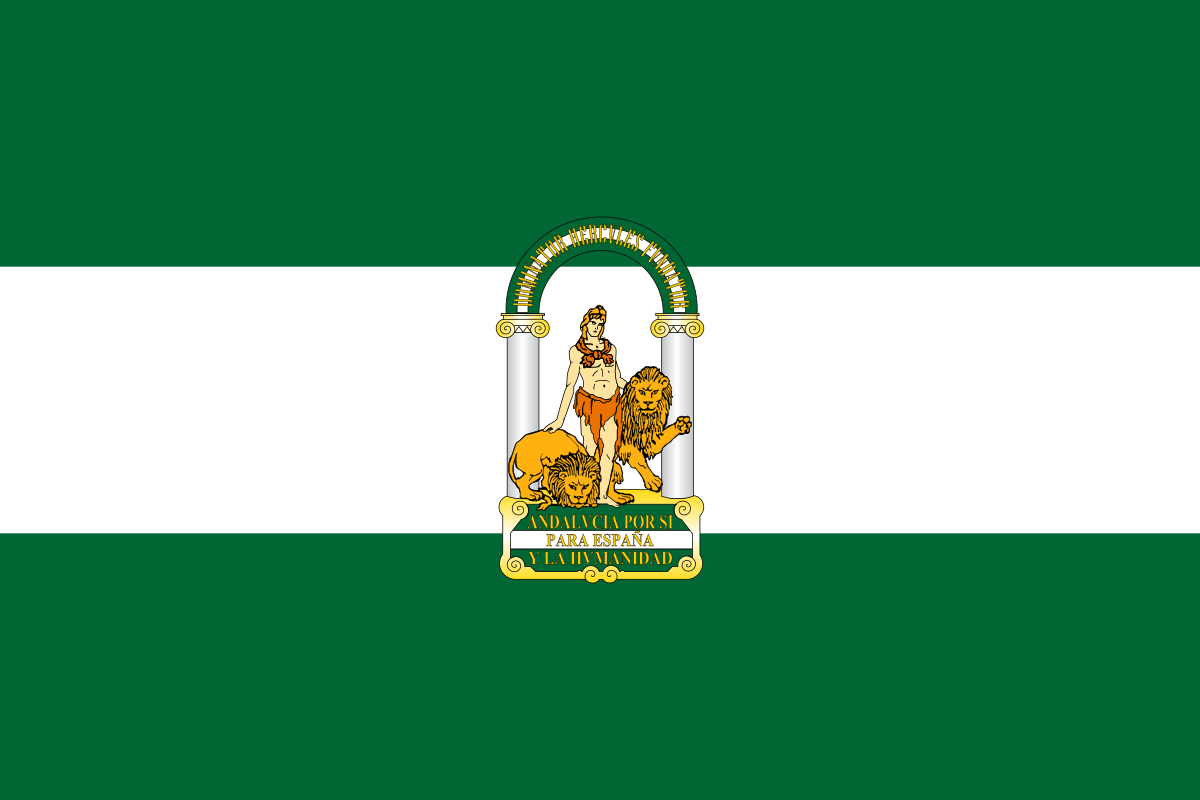 Andalucía
Andalucía
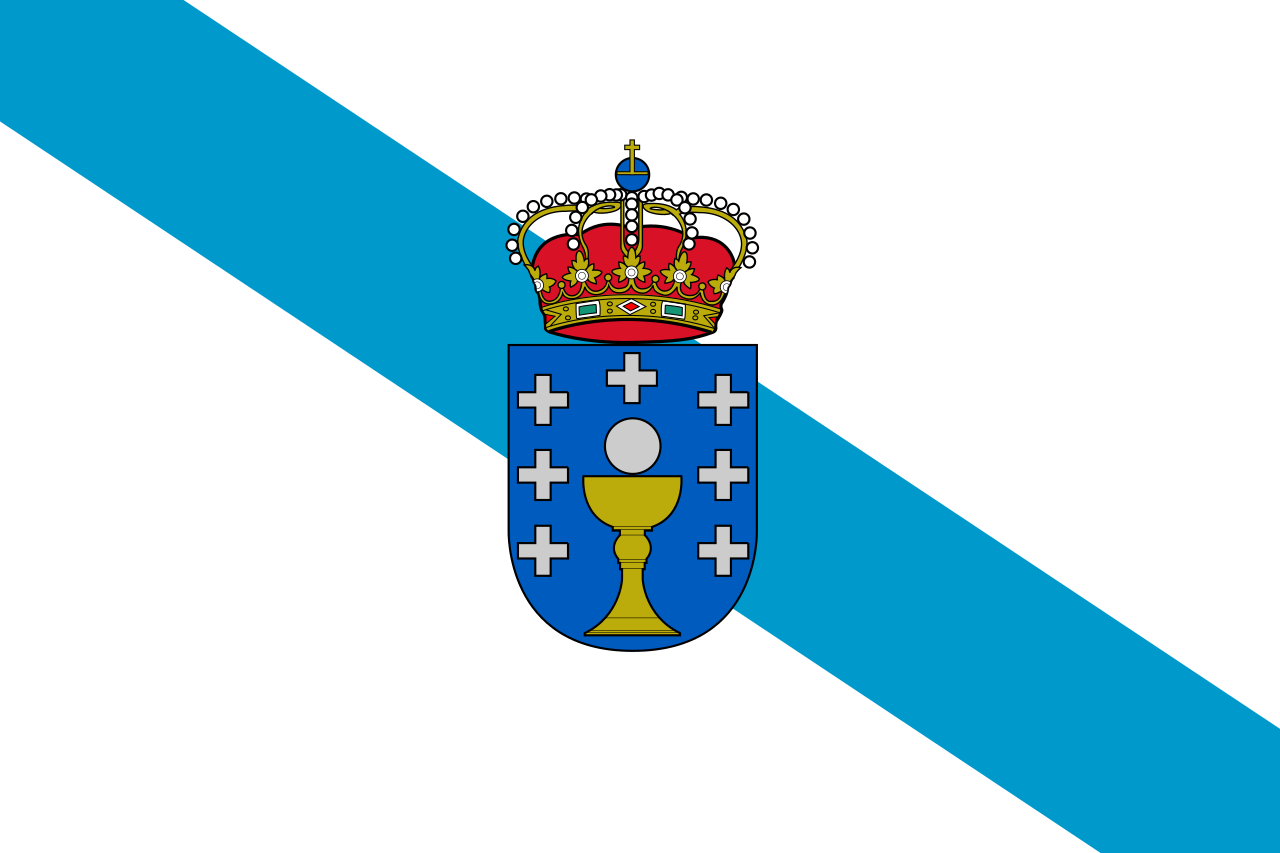 Galicia
Galicia
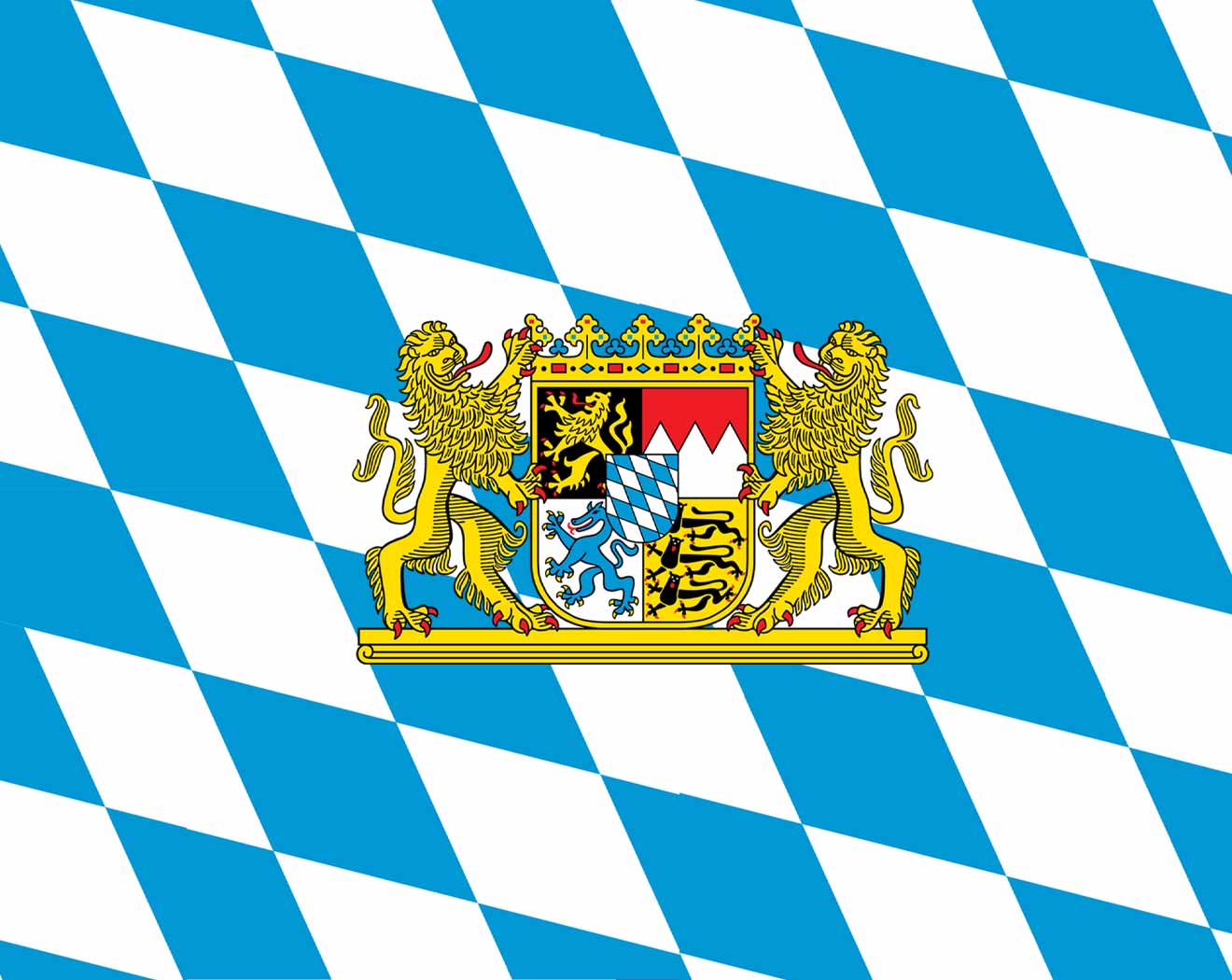 Bayern
Bayern